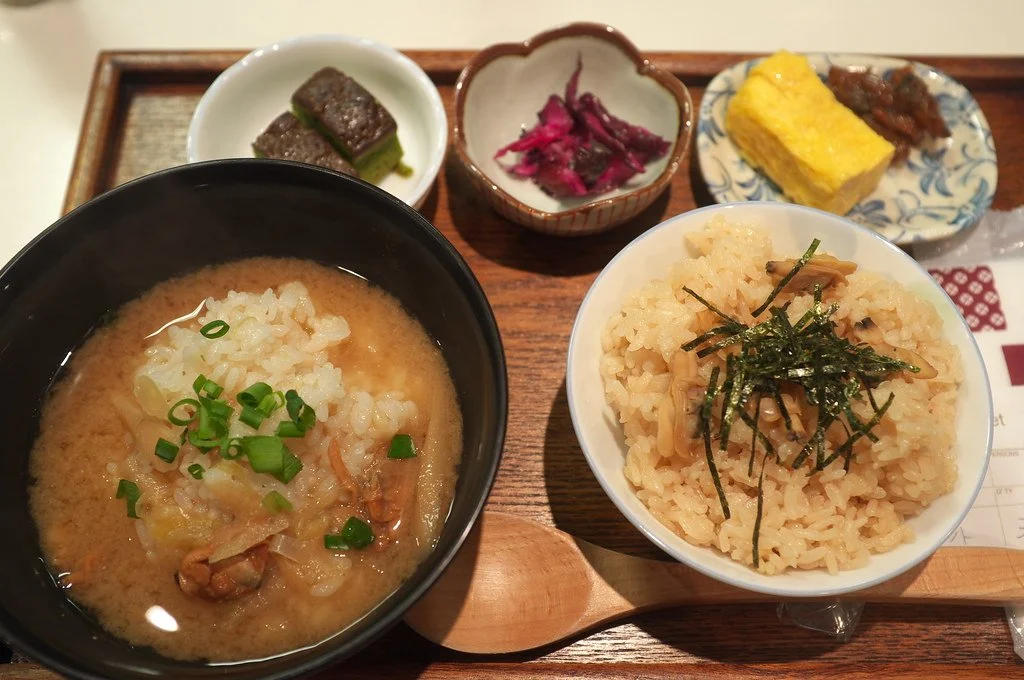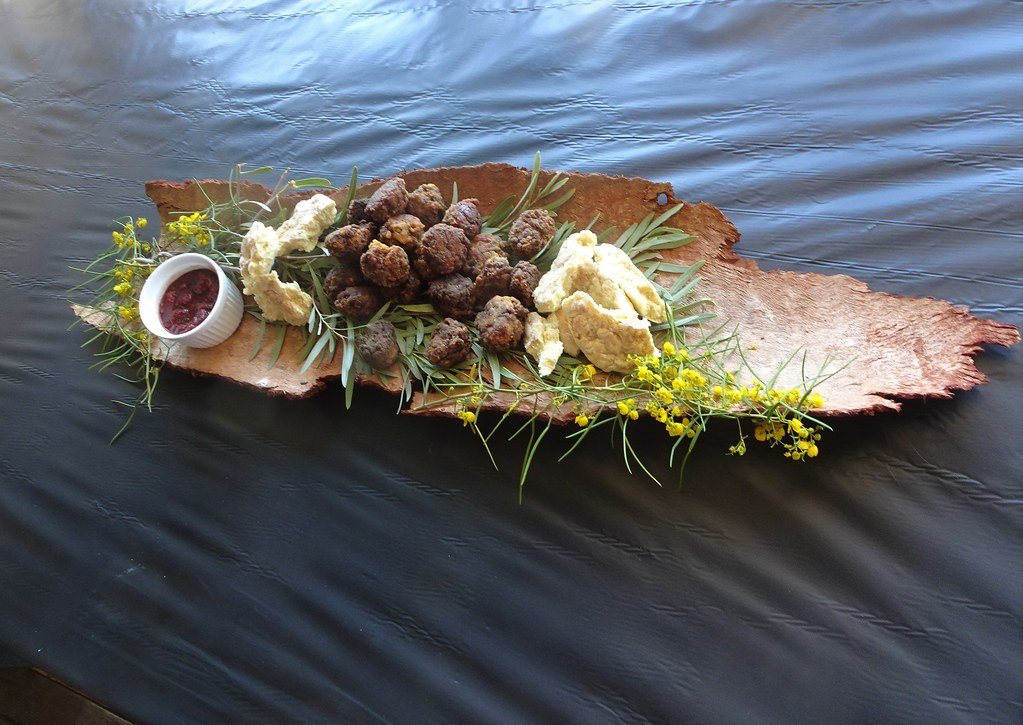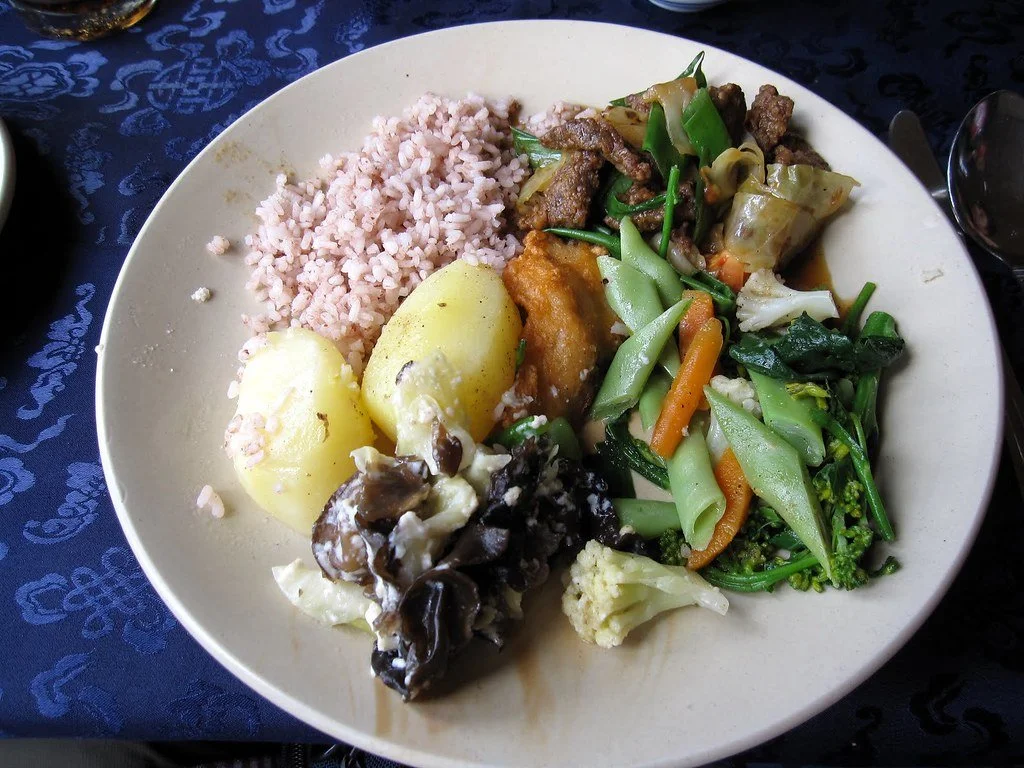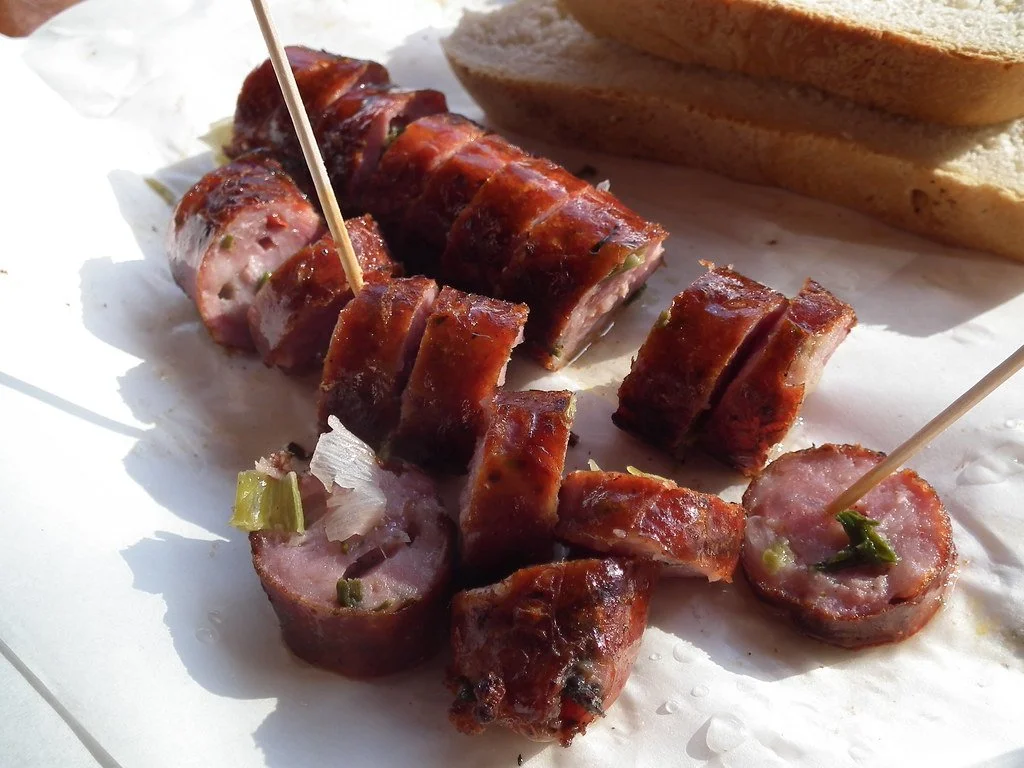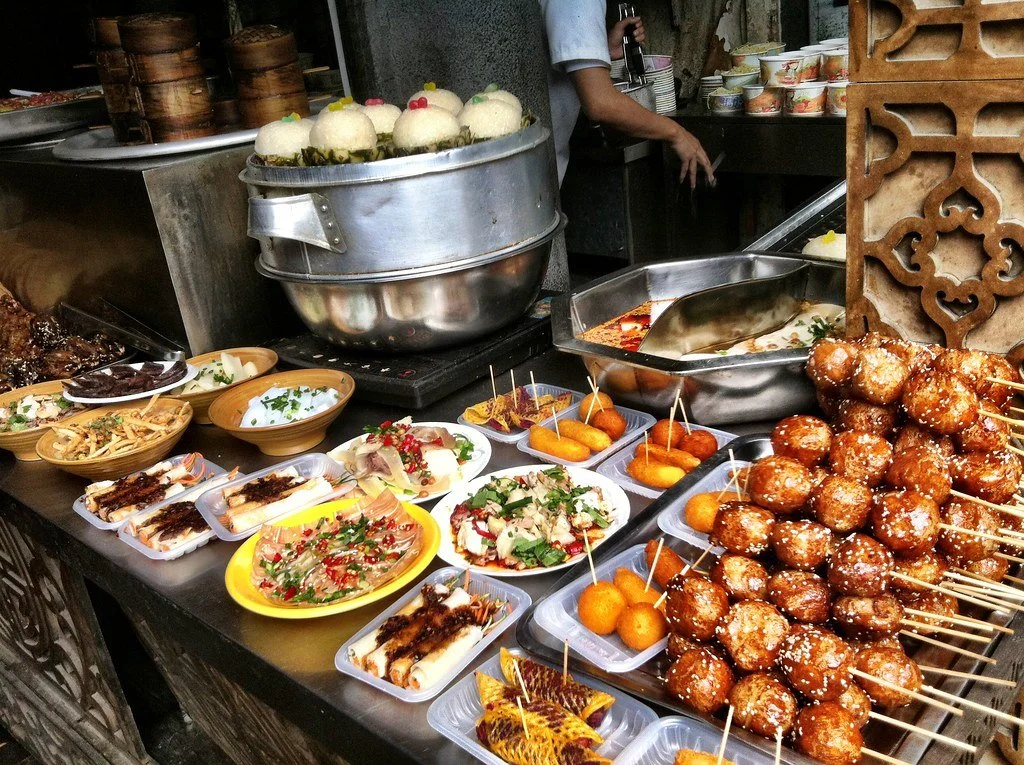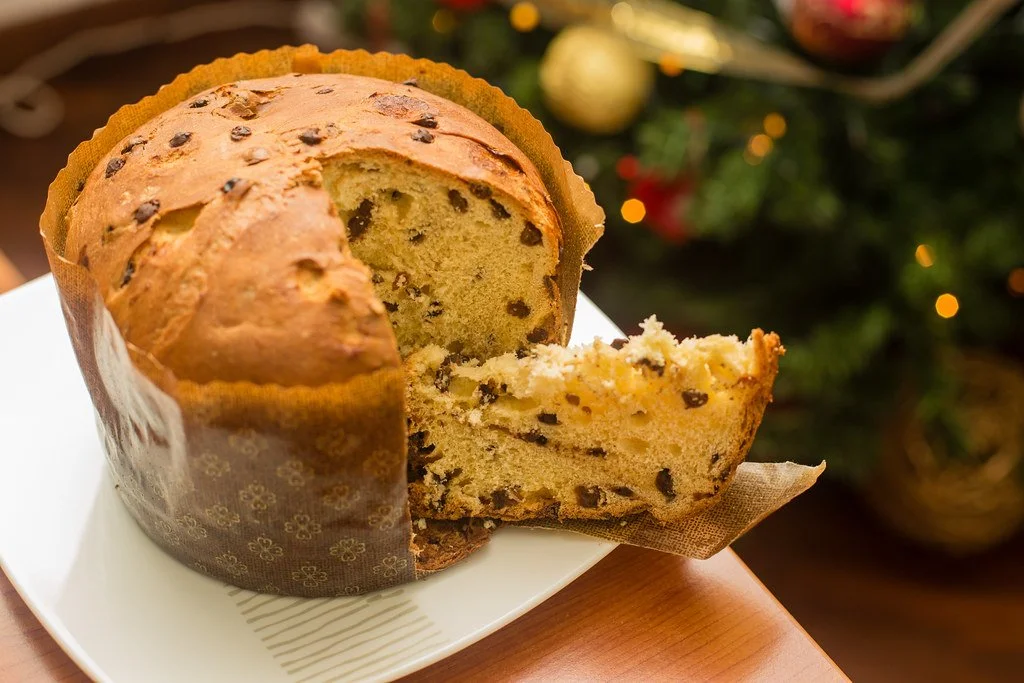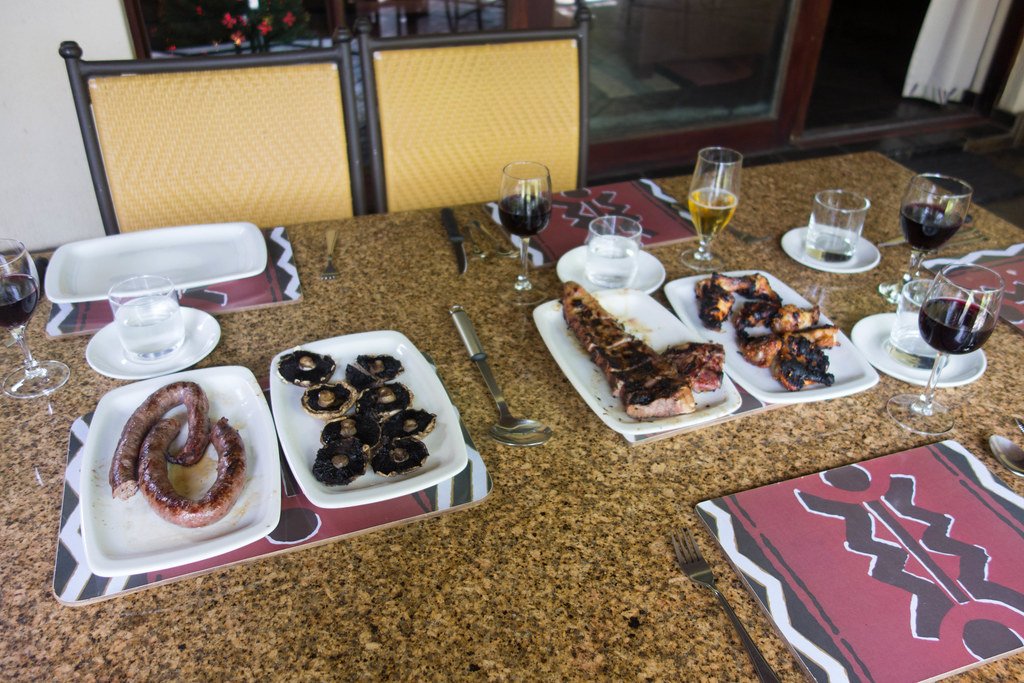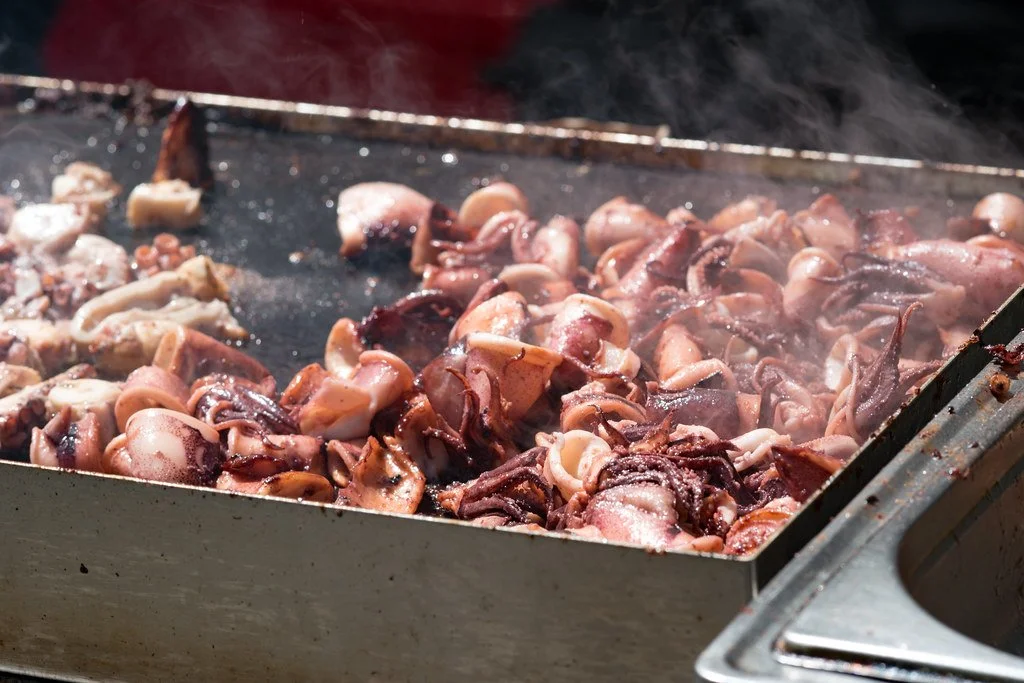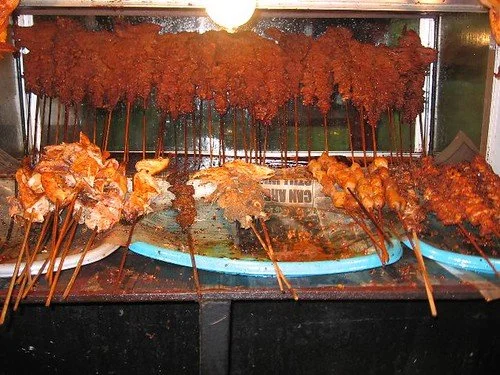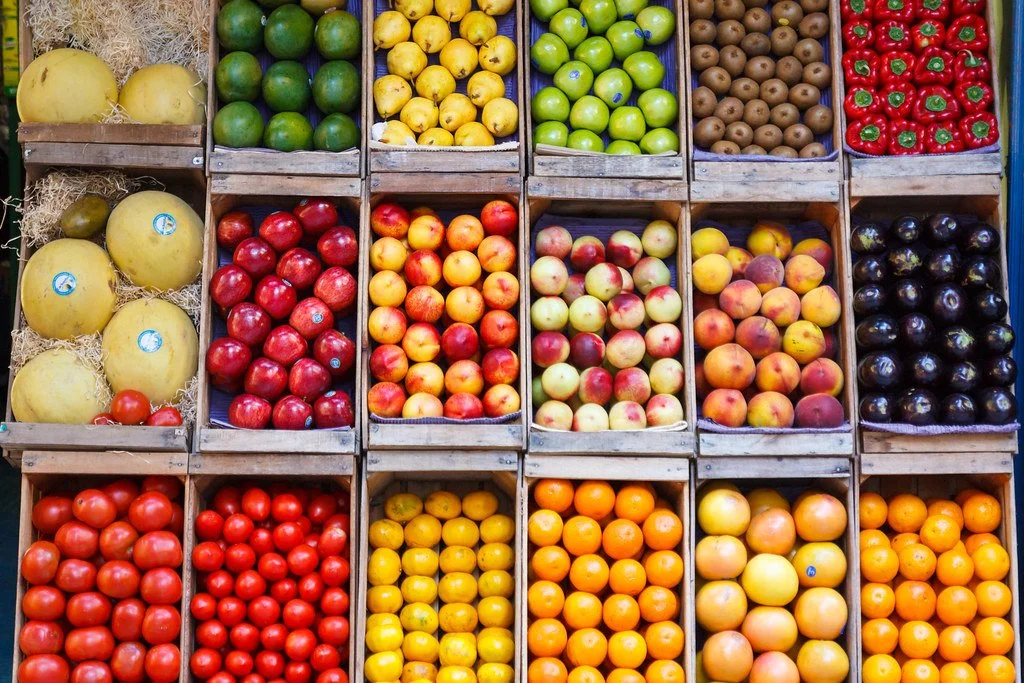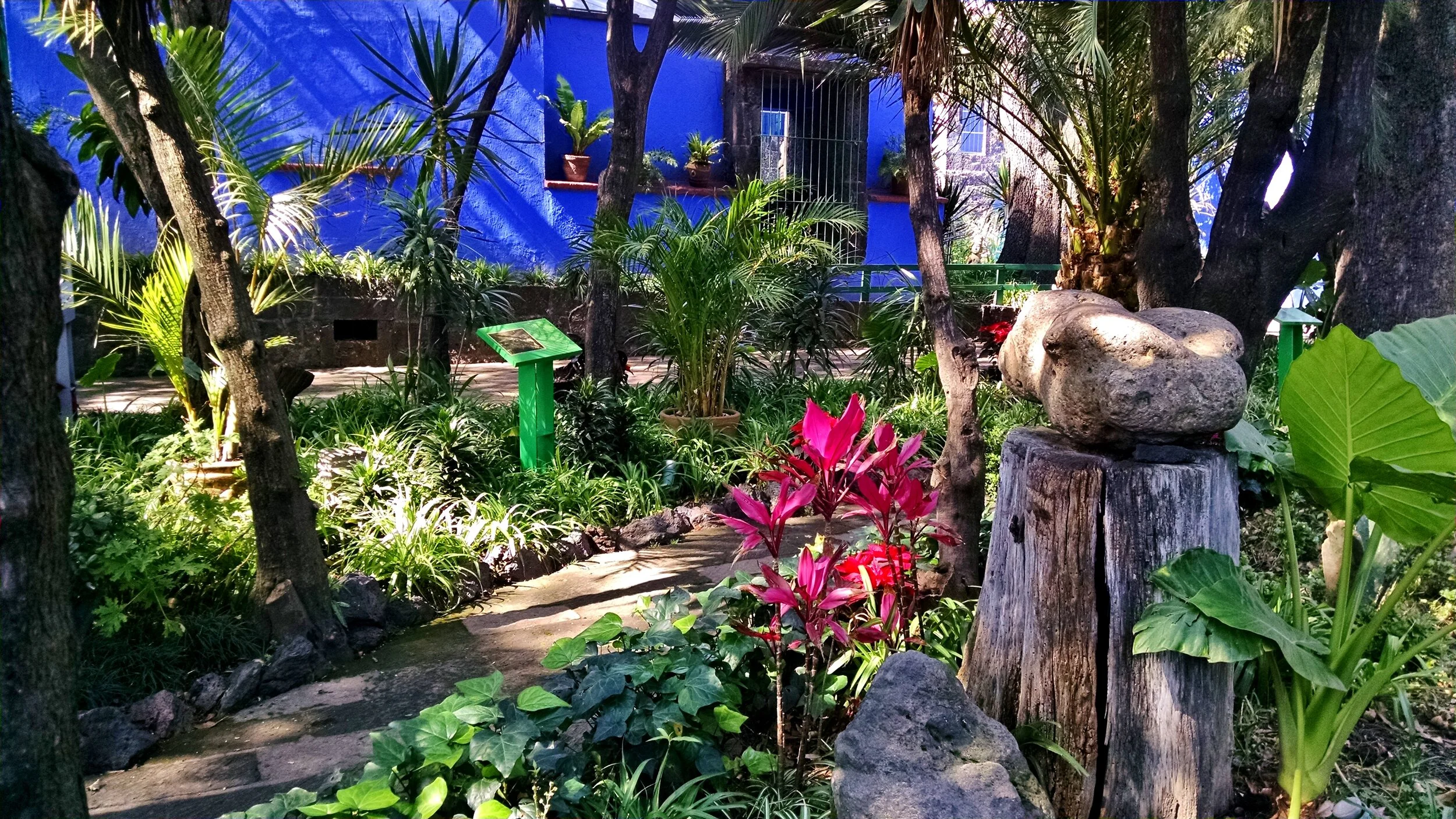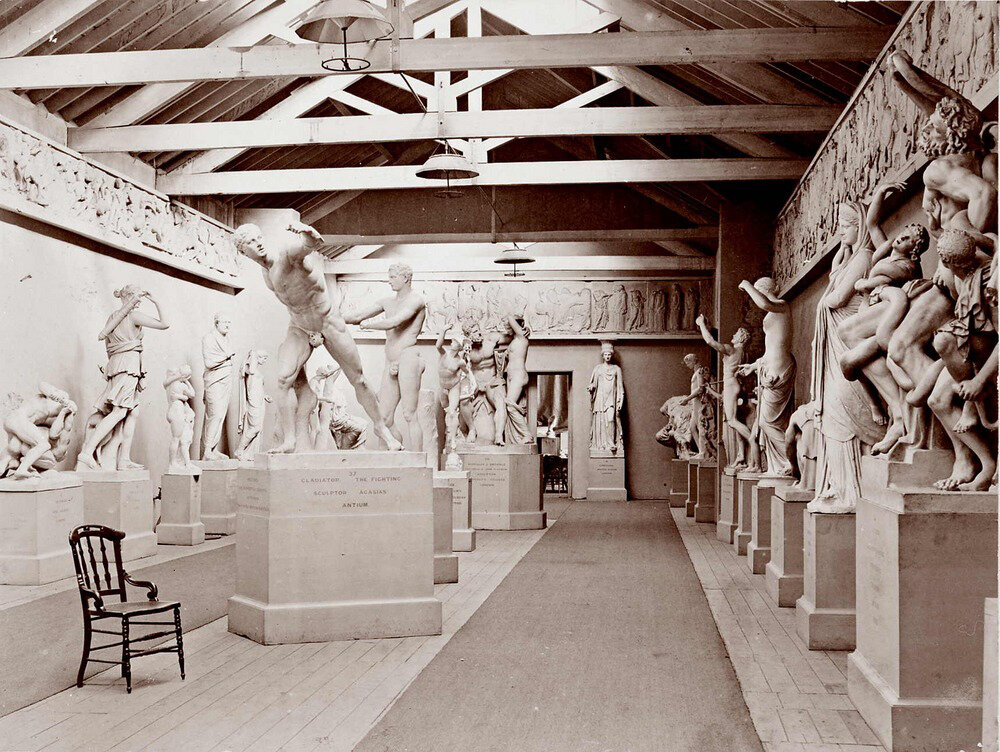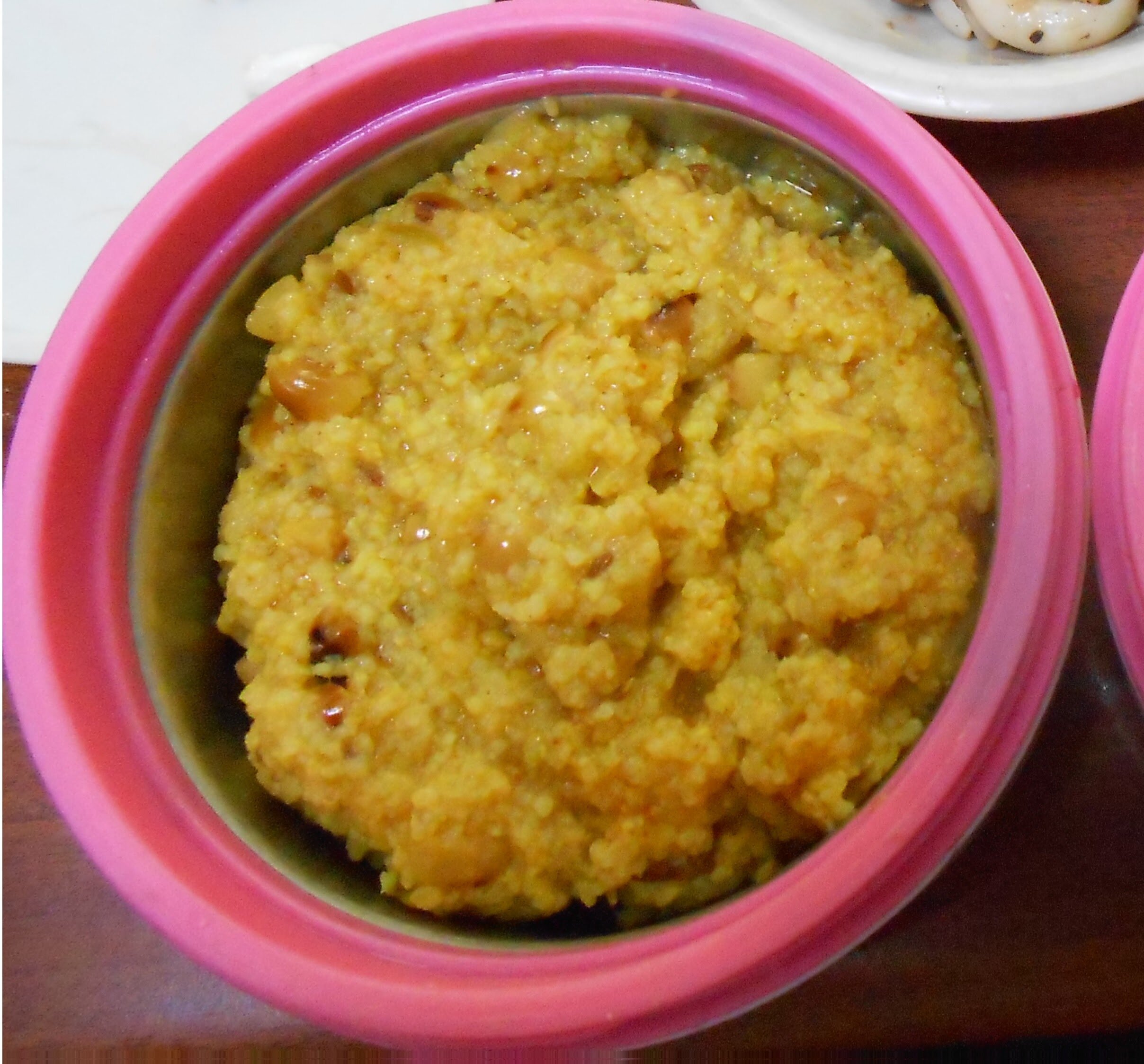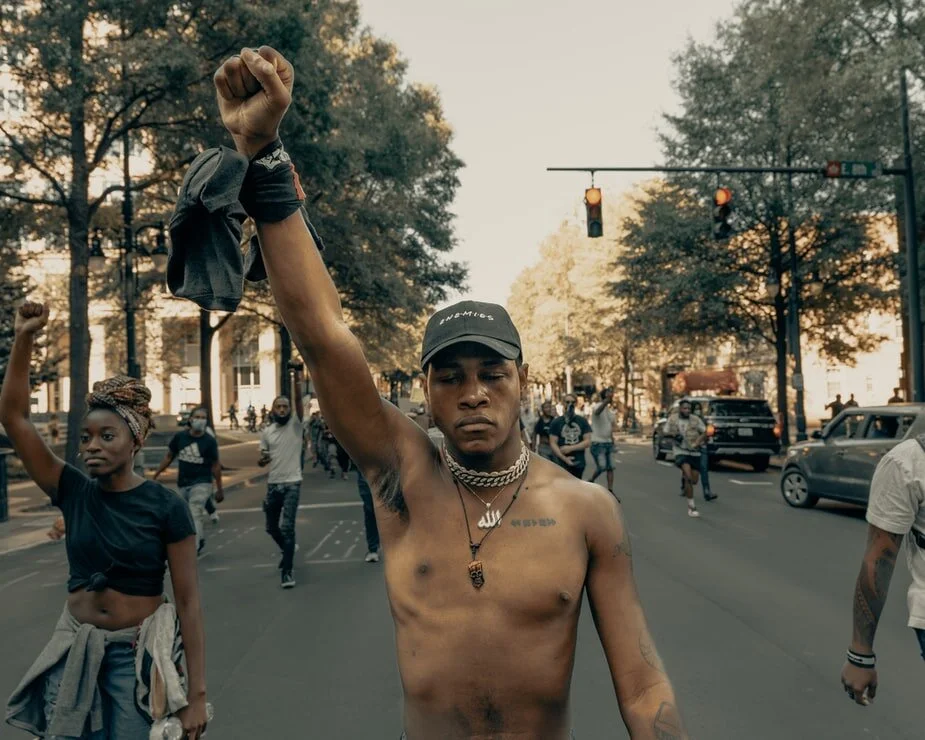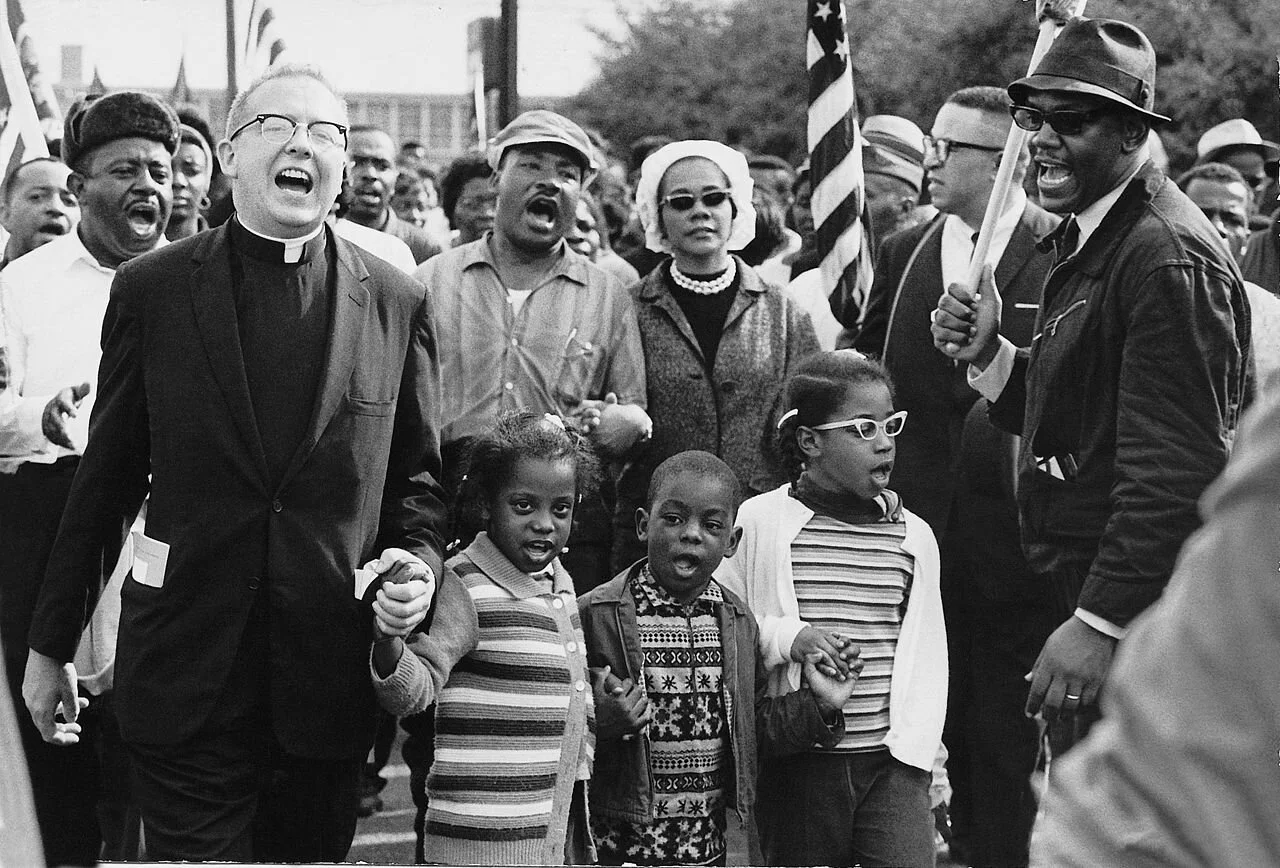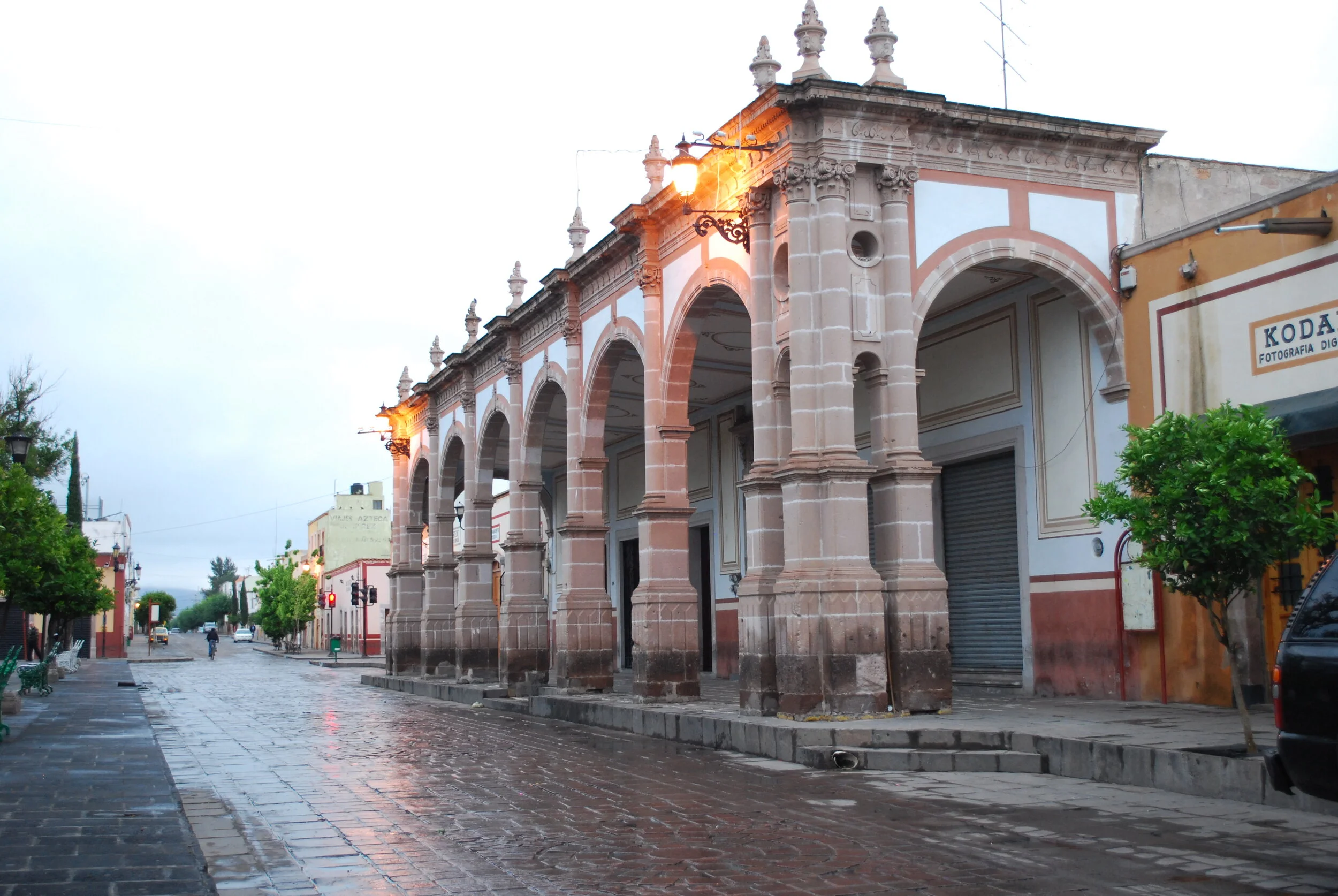Explore world cultures without leaving the United States in these 8 diaspora neighborhoods.
Read More7 Sites of Mexico City’s Architectural Diversity, from Baroque to Brutalist
Mexico City is a flourishing metropolis with a plethora of historic and modernist architectural sites. Here are a few attractions scattered around the city.
A street at the center of Mexico City. Flickr user Franx’. CC BY-NC 2.0.
A Gothic cathedral sits next to a glassy business building. Brick houses with arabesque detailing overlook the noisy streets full of men in suits and street food vendors. Mexico City is growing every year; its multiplicity of neighborhoods hosts a variety of architectural styles and people from all over the globe. Often regarded as an oasis of modernity in the entirety of Latin America, this urban center has been labeled the “next Paris'' or as a new version of New York. Given its history of colonialism and its willful modernization under Porfirio Diaz, Mexico City’s compilation of architecture is oftentimes representative of its past and present. Here’s a cursory glance at a few of Mexico City’s sites of modernization, and the contradictions at play in these structures.
The Central Library of the National Autonomous University on a gloomy day. Mark Hogan. CC BY-SA 2.0.
1. Central Library of the National Autonomous University
Juan O’Gorman’s Central Library of the National Autonomous University (UNAM) is a spectacle to behold. This behemoth holds the qualities of international modernist architecture: its 14-story frame sits above a glassy ground floor which looks over a neatly gridded yard. Yet, O’Gorman’s building doesn’t possess the stoicism of standard midcentury modern architecture; its distinctively Mexican-themed mural makes the building a historic storybook. Like a visual epic, the “Historical Representation of Culture” mural includes the expansive timeline of pre-conquest Mexico, the Spanish conquest, Mexican modernization and Mexico’s future. One can spot mosaics of the beginnings of Tenochtitlan, and the clash between pre-Hispanic Mexico and vehicles of Spanish colonialism. O’Gorman believed his mosaics of these cultural signifiers would make the library “different from the rest of the buildings within University City” by giving it a distinctly “Mexican character.”
A corner of the exterior of Casa Luis Barragan. Forgemind Archimedia. CC BY 2.0.
2. Casa Luis Barragan
Casa Luis Barragan, which was built in 1948, looks as if it were suspended in time and space: colorful red walls jut into the placid blue sky, although they are immobile in detail and structure. Luis Barragan is a world-renowned architect whose eccentric architectural style can be recognized in his buildings’ solid colors, geometric shapes and sparsity of details. This vibrant house is a foil of O’Gorman’s direct homage to Mexico as a nation; it highlights formalist qualities over political values, which Barragan considered secondary to his architecture. Barragan is an expert at manipulating elements of nature. The play of shadows within the structure itself and the use of greenery turns an otherwise intimidating monument into a livable habitat. Although countless travel journals have attached Mexican modernist themes to Barragan’s home, it resists the supposed markers of “Mexican” aesthetics and remains a private site of great accomplishment.
Thousands visit the Basilica de Guadalupe daily. Alex Marduk. CC BY 2.0.
3. Basilica de Guadalupe
Pedro Ramirez Vazquez’s seminal work, the Basilica de Guadalupe, is a sacred destination for thousands of Catholics around the world. The area it sits on, Tepeyac, was originally a place where Aztecs worshipped Tonantzin, or “the divine mother.” As a result of the suppression of Aztec religions during Spanish occupation, the Basilica de Guadalupe was built for Our Lady of Guadalupe who was said to have appeared before St. Juan Diego. The original colonial basilica was severely damaged in 1921 in a bomb attack, but Vazquez’s new Basilica de Guadalupe renovated the sacred site. This site was just one of Vazquez’s projects dedicated to industrializing Mexico, as shown in its modernist disk shape and the sheer mass of its structure.
Monumento a la Revolucion sitting at the city center. Ismael Villafranco. CC BY 2.0.
4. Monumento a la Revolucion
Located in the Cuauhtemoc borough of Mexico City, Monumento a la Revolucion is a stately memorial which celebrates the Mexican Revolution of 1910. Mirroring many of the United States’ federal buildings in Washington, the monument’s perfectly symmetrical Roman dome is fortified by brick pillars which meet at the four corners of the structure. Carlos Obregon Santacilia continued the project after it had been abandoned by both the state and the French architect they commissioned for the building, Emile Benard. Oliverio Martinez’s smooth sculptural representations of independence, reform, agrarian laws and labor laws protect the mausoleum on its four corners. In this marriage of neoclassical elements and Mexican nationalism, the Mexican government actively constructs its origin story via the conventions of Roman and French architecture.
Close-up shot of Martinez’s sculpture on Monumento a la Revolucion. Flickr user tchelseat. CC BY-NC 2.0.
A view of the facade of La Santisima Church. Wikimedia user Protoplasmakid. CC BY-SA 3.0.
5. La Santisima Church
La Santisima Church is covered in the Spanish churrigueresque style, which is the Baroque style that was dominant in Spain during the 18th century. Its facades are adorned with ornate carvings of the apostles, angels, Jesus and Mary placed in between its many columns. Although it appears relatively normal in a city full of extravagant churches, the distinctive religious iconography on its exterior deems La Santisima Church worthy of close attention.
Museo Soumaya shines brightly on sunny days. Flickr user Dan. CC BY 2.0.
6. Museo Soumaya
No piece of architecture screams “contemporary” like the Museo Soumaya. Museo Soumaya, which houses thousands of sculptures and paintings from pre-Hispanic Mesoamerica up to European impressionist works, is a piece of art itself. The Plaza Carso building in particular is an intriguing malformed shape dressed in millions of aluminum hexagons. Taking inspiration from Frank Lloyd Wright’s Guggenheim in New York, Fernando Romero designed the Plaza Carso as an enigma: the concept behind the work is intentionally vague, and the usefulness of its parabolic shape questionable.
Front view of Museo Anahuacalli. Javier Castañón. CC BY-NC-ND 2.0.
7. Museo Anahuacalli
Although Diego Rivera is widely known for his painted murals, his exploration of three-dimensional design is just as noteworthy. Rivera’s Museo Anahuacalli was made of his own accord; Rivera wanted a space for his collection of over 50,000 relics of pre-Hispanic Mesoamerica. The style of the building is an amalgam of various Mesoamerican styles, taking inspiration from Teotihuacan and the temples of the Mayans and Aztecs. The exterior of the museum has the symmetry of neoclassical architecture, while its interior is heavily influenced by the Aztec pyramid.
Many scholars speculate that the development of uniquely “Mexican” architecture, seen through Mexico City’s plethora of sites, stems from a desire for national representation. Mexico City’s postcolonial realities are found in its very infrastructure: one cannot ignore the presence of Catholicism, the reminders of a pre-Hispanic Mesoamerica, and the complications of deliberate industrialization. Juan O’Gorman’s library attempts to artfully marry the past, present and future. Casa Barragan is the work of a maverick who resists the narrative of a national architecture. The grandiose Basilica de Guadalupe is holy ground for millions of Catholics, yet it strays from the Gothic style of typical European cathedrals.
The sheer amount of voices and styles in this sprawling metropolis is telling of its complicated relationship with modernization. There is no shortage of historic, formal, religious and artistic values in each of Mexico City’s buildings.
Heather Lim
Heather recently earned her B.A. in Literatures in English from University of California, San Diego. She was editor of the Arts and Culture section of The Triton, a student-run newspaper. She plans on working in art criticism, which combines her love of visual art with her passion for journalism.
12 Local Cuisines You Can Find Around the World
Tasting local foods is one of the most interesting things about travel. Learn about some hallmark culinary traditions of these diverse regions.
Meat and veggies simmering in a pan. LoKan Sardari. CC BY-NC-SA 2.0.
My favorite part of traveling is exploring and tasting local food dishes with culturally significant roots within the region I’m visiting. When I traveled to London, I explored the local pubs and decided fried fish wasn’t that bad. The local aspect of dishes excites me, and I would much rather dine in a family-owned restaurant than a tourist trap.
This serves as a bite-sized serving of the infinite variety of food on this massive planet—not a definitive recounting of the delicious and culturally significant dishes on Earth, but rather these regions serve as starting points that lead to culinary exploration.
1. Kanto Region - Japan
Fukagawa meshi and other side dishes. Nekotank. CC BY-ND 2.0.
Japan is divided into eight regions, each of which has its own culturally significant dishes. The Kanto region is home to the capital city of Tokyo, and the flavors are stronger than the other regions’ food. Fukagawa meshi is a dish that originated in the Edo period (approximately 1603-1867) and consists of clams and leeks cooked in a miso stew. The dish was a product of abundant fishing in the area and quickly became adopted by locals. The Kanto region became a hub for industry during the Edo period, and the cuisine naturally started evolving to incorporate other region’s influences.
2. New South Wales - Australia
Kangaroo Meatballs with quandom jam. by denisbin. CC BY-ND 2.0.
Prior to the 18th century, the Indigenous population of Australia subsisted on hunting local wildlife, including kangaroos and wallabies. Once Australia became a continent-sized prison for the British Empire, the cuisine quickly modified to have influences of the colonizer diet. Today, Sydney cuisine reflects the multi-cultural population that lives there. Take-away foods and fast food are staples of Australian culture, and Sydney specifically is a melting pot of local and international foods. Fish and thick cut fries are common. The cuisine of Australia is heavily influenced by Western diets but still utilizes ingredients that Aussies connect with, including eating their national animal, the kangaroo—a dish low in fat, delicious, and popular in local restaurants.
3. Phobjikha Valley - Bhutan
Bhutan dish with potatoes and vegetables. By rapidtravelchai. CC BY 2.0.
This region is home to many rich cultural events, such as the Black-Necked Crane Festival, which honors one of the region’s most culturally significant animals. This festival is held annually on Nov. 12, where cranes can be seen flying at high altitudes, accompanied by traditional dancers dressed in black-necked crane attire. The local cash crop is potatoes, which are the main ingredient in kewa datshi, a traditional dish prepared by thinly slicing potatoes and sauteeing with cheese, butter and chiles. The dish is relatively new to the region’s culture; in fact, potato consumption in Bhutan was near non-existent until the 1970s. Until then, it was mainly used as an export crop. Due to the region’s altitude and climate, insects do not interfere with the local’s potato crops, which eliminates the need for harmful pesticides.
4. Metsovo - Greece
Skewered sausages. PACO POMARES. CC BY-NC-SA 2.0.
Situated to the north of Epirus, Greece, this gorgeous small town is home to some of Greece’s most delicious industries: wine and cheese. The history of this town is fascinating, with it being the center of production for sheep wool traded as far as Northern Africa during the 17th and 18th centuries. The region is most popular during the winter season for its spectacular mountains and beautiful streams. Venturing off the beaten path, one can find themselves entranced with gorgeous forests, filled with statues, 19th-century architecture and natural springs supplying fountains. The local cuisine has an emphasis on dishes with rich flavors like sausages and ruffage, as well as a nice glass of wine to pair with it. Extra virgin olive oil is a heavily used condiment that could be added to multitudes of things, including toasted bread and other dishes.
5. Chengdu - China
An assortment of Chengdu Food. sinosplice. CC BY-NC 2.0.
Chengdu, China is a so-called “Party City,” according to the Los Angeles Times. While it is true that Chengdu has more teahouses and bars than Shanghai, it’s also home to many local dishes, specializing in chiles and peppercorns. One dish, dan dan mein (which Chengdu is credited for making), utilizes both in order to achieve a very spicy broth. Chengdu’s local tea culture is also very important, since the city was once a starting point for the Silk Road, offering many opportunities to create and enhance cultural staples. Although not culinary-specific, the city is a hotspot for LGBTQ+ travelers and natives, combining influences from the local party scene and the Queer community.
6. Soca Valley - Slovenia
Panettone with chocolate chips. Nicola since 1972. CC BY 2.0.
Slovenia is right in the center of four surrounding cultural influences; the Balkans, Alpines, Mediterranean and Pannonian flavors are all present in Slovenia’s dishes, and each is broken down into distinct ‘genres’ of food. The Alpine mountains are home to the cows and sheep that graze and produce milk, used for cultural dishes like žganci (literally translated as mash). The expansive meadows let honey bees run rampant to produce fresh honey. To the east of Slovenia, there is a vast amount of wheat fields, used to prepare a litany of different dishes and thermal springs that allow for fresh drinking water. The most popular fish is sea bass, and according to popular sentiment in the region, “a fish must swim three times, in water, oil and wine.” By utilizing hard harvested salt, Slovenia’s population takes its local cuisine very seriously.
7. Cape Town - South Africa
Braai at a meal. Kent Wang. CC BY-SA 2.0.
South Africa’s cuisine can be summed up with the term “melting pot,” since this region contains a mixture of Asian, European and Indigenous cultures within their food. Braai, an almost universally utilized meat preparation method in Southern Africa, is prepared by digging a firepit, providing meat and setting it ablaze. The practice is adjacent to America’s cultural touchstone of “barbecue,” although a key difference is that braai fires stay lit throughout the celebration as participants enjoy everyone’s company. Indigenous populations prioritized beef as a high-value food, and today, many South Africans still utilize foods from their Indigenous past. Colonialism severely altered the landscape of South African cuisine by bringing in an enslaved workforce from across Asia, which in turn brought their own cultural roots. The introduction of spices like nutmeg and allspice and the influence of European culture altered the cuisine further. Fermented beer is also popular, with a common practice being offering someone homemade beer as they enter your house.
8. Sicily - Italy
Italian cassatelle drizzled with chocolate. JohnDiP. CC BY-NC-SA 2.0.
Across the Mediterranean is the island of Sicily, a region known for its famous seafood dishes, sweets and, of course, pasta. The island restaurants have the opportunity to catch fish from the surrounding Mediterranean, specializing in tuna and freshly caught sardines. Pasta con le sarde is one of Sicily’s most popular dishes, utilizing fresh fennel seed that grows abundantly in Italy and the sardines from the surrounding sea. The dish also reflects the region’s multicultural influences, such as including raisins and pine nuts adapted from North American travelers. Sicily’s sweet side is also on full display, with cannoli being a centerpiece in Sicilian culture. Made with sweet ricotta filling, the crust of the cannolis is made from a fried pastry.
9. Andes - South America
Cuy on skewers. Nestor's Blurrylife. CC BY 2.0.
The Andes Mountains are home to communities of Indigenous peoples who have worked to preserve traditional flavors and techniques. The foodstuffs of the Indigenous peoples were incredibly versatile. Corn and potatoes are still some of the most important aspects of Andes cuisine, accompanied by traditionally used meats such as llama and guinea pig. Another word for a guinea pig is “cuy,” which has been a staple in Peruvian culture since the Incas and is used on important occasions.
10. Prague - Czech Republic
The capital of the Czech Republic harbors many cultural influences within its dishes. Italian food has touched the landscape of cuisine in Prague, but there are still many delicious dishes with deep Czech roots. Czech cuisine doesn’t have lots of vegetables in its arsenal of ingredients, and the foods of Prague are “delicious, comforting, very filling and addictive.” Steak tartare, a dish that tops “Taste of Prague’s” list of snacks that pair well with beer, is raw minced beef served with an egg or condiments. Sausages are a very common food in Prague, as well as the greater Czech region, overflowing into Germany.
11. Central Ghana
Western Africa’s recipes are still being prepared in deeply culturally important ways. Dishes are typically very starch heavy, accompanied by heavily seasoned meats, like beef, fish and the most dominant form of red meat in this region, goat. Traditionally, West Africans didn’t eat much meat and instead opted for dishes with natural oils, but now locals mix various meats together in different aspects of dishes. Suya is also a very popular street food, taking meat and mixing it with spices, resembling a kebab flavor on a stick. Prior to Ghana’s independence in 1954, residents boycotted colonial goods, including tinned meat and biscuits, in an effort to lower the cost of living. This action, along with a demonstration at the governor’s estate, set the stage for Ghana to be the first Sub-Saharan independent country. Ghana is not concerned about dictating a national food, rather it embraces the diversity of the many cultural influences within the country.
“Ghanaians expect to encounter diverse ethnic foods when traveling through different ecological zones within their country,” said researcher Brandi Miller in her paper, “Food and Nationalism in Independent Ghana.” “They welcome this difference and consider it a source of national strength and an indication of their unique national character, which embraces diversity.”
12. Tropics - South America
Fruit in a market. Nico Kaiser. CC BY 2.0.
On the beaches of South America, some so-called ‘exotic’ fruits are common staples of local culture. Pineapples, mangos, papayas and dozens others can be found in the tropical forests within the region. The climate allows for a dizzying variety of local agriculture to be used in recipes, such as tostones, which are popular Latin American twice-fried sliced plantains. The Amazon Rainforest is also utilized to enhance local flavors, utilizing meats from turtles and capybaras to use for local cuisine. Nearer to the coast, seafood dishes like ceviche are common to see enjoyed on a sunny day on the beach. Other than fish and fruits, there is a wide variety of vegetables that are grown in the tropics that influence local cuisine, including corn, beans and sweet potatoes.
Clayton Young
Clayton is an aspiring photojournalist with a Bachelor's in Liberal Studies with a minor in History from Indiana University - Bloomington. In his free time, he enjoys hikes, movies, and catching up on the news. He has written extensively on many topics including Japanese incarceration in America during World War II, the history of violence, and anarchist theory.
The Louvre Museum in Paris. BY-NC-SA 2.0
8 Museums from Around the World to Visit Virtually from Home
The coronavirus pandemic has seen many facets of daily life change. Many are working or taking classes from home, limiting their contact with the outside world, and finding new methods to ward off the fear of missing out on travel. With no clear end in sight, the trend of virtual living, working and playing is likely to carry on into next year.
In recognizing this unique opportunity, many museums around the world have opened up their collections to be viewed online for free. With exhibits ranging from science to rare art to historical demonstrations, there truly is something for everyone to enjoy. Below is a guide to eight museums whose exhibitions are available to be viewed from home.
1. Prado Museum — Madrid, Spain
Wenji Zhang. CC BY 2.0.
The Prado Museum is Spain’s most important art museum and is world-renowned for its extensive collections of European and Spanish artwork. The museum’s collection is home to approximately 8,200 drawings, 7,600 paintings, 4,800 prints and 1,000 sculptures, and features the work of artists like Diego Velazquez, Francisco de Goya and El Greco.
According to Miguel Falomir, director of the Prado Museum, “Since its foundation in 1819, the Museo del Prado has played a key role in the evolution of art history. It has been crucial for the rediscovery of the Spanish Primitives and emblematic figures such as El Greco, and for positioning Velazquez as the greatest figure in the Spanish pictorial Parnassus, while its galleries have inspired some of the most avant-garde painters of the past 150 years. We are proud to show visitors this great artistic patrimony.”
The online collection, which is available here, showcases over 10,000 works of art. Additionally, the museum’s Instagram account, @museoprado, uploads daily mini-tours of different pieces which discuss their history and meaning.
2. National Museum of African American History and Culture — Washington, D.C.
Ron Cogswell. CC BY 2.0.
The newest addition to the Smithsonian Institution’s National Mall campus, the National Museum of African American History and Culture is the sole national museum in the United States dedicated to documenting African American life, culture and history. The museum was widely popular when it opened in 2016, and has only continued to gain prominence with the resurgence of the Black Lives Matter movement.
The museum offers a number of virtual exhibitions and resources, including permanent and past special exhibition galleries, publications for further research into African American history, and a “Curator Chats” series which features museum curators providing information on the museum and various upcoming projects.
3. Georgia O'Keeffe Museum — Santa Fe, New Mexico
Kent Kanouse. CC BY-NC 2.0.
The Georgia O’Keeffe Museum is a small gallery located in New Mexico’s capital city which is dedicated to the life and work of Georgia O’Keeffe, one of the most influential American modernist painters. Since its opening in 1997, the museum’s collections have grown to house nearly 1,200 pieces of the late artist in its Santa Fe gallery and in the Abiquiu Home and Studio, where O’Keeffe resided and created many of her most popular pieces.
While the museum has since reopened with a limited capacity for visitors, art lovers across the globe can still enjoy the museum’s virtual collections, which include digital versions of her art, various online programs and creative activities to create art at home inspired by O’Keeffe’s legacy.
4. Kahlo Museum — Mexico City, Mexico
Kyle Magnuson. CC BY 2.0.
Located inside Frida Kahlo’s lifelong home, the Frida Kahlo Museum features a number of the artist’s paintings, as well as her home studio and garden. The site is famous for its vibrant blue walls which have given the building the nickname “La Casa Azul,” or “the Blue House.”
Hilda Trujillo, one of the museum’s curators, stated that: “As one explores Frida Kahlo’s work more deeply and enjoys the privilege of getting to know her home, one begins to discover the intense interrelations between Frida, her work and her house. Her creative universe is to be found in the Blue House, the place where she was born and where she died.”
Via Google Arts & Culture, visitors to the museum’s virtual gallery can view the “Appearances Can Be Deceiving” exhibit, a number of photos and paintings, and immersive virtual viewings of four rooms within the museum.
5. Emperor Qinshihuang’s Mausoleum Site Museum — Xi’an, China
Larry Koester. CC BY 2.0.
One of the most famous archaeological sites in the world, the Emperor Qinshihuang’s Mausoleum Site Museum is home to the terra-cotta army, a collection of several thousand sculptures depicting the army of Qin Shi Huang, China’s first emperor. All of these sculptures surround the emperor’s mausoleum in formations meant to guard the site from invaders.
The site in Xi’an was discovered by local farmers in 1974, and numerous excavations have uncovered more than 8,000 individual sculptures buried in the site.
The museum offers a broad online collection with a number of selections. Likewise, the virtual experience allows viewers to learn more about the history of the terra-cotta army, as well as detailed information on individual sculptures.
6. National Gallery of Victoria — Melbourne, Australia
State Library Victoria Collection. CC BY-NC 2.0.
The National Gallery of Victoria is the oldest and largest art museum in Australia. Featuring thousands of pieces of Australian Indigenous art, Asian art and international art, the museum has grown to become the most visited art museum in the country.
The museum offers an extensive list of virtual experiences which will keep any stuck-at-home art lover captivated for days. Digital tours like “20th Century Australian Art,” “Japanese Modernism” and “Marking Time: Indigenous Art from the NGV,” short documentary films, explanatory articles, podcasts and the museum’s bimonthly magazine are all available for free on the museum’s website.
7. National Museum — New Delhi, India
Tom Thai. CC BY 2.0.
The National Museum in New Delhi is one of the most prominent art institutions in India. Inaugurated in 1949, the museum’s collections have grown to house over 2 million diverse pieces of Indian and foreign artwork which represent over 5,000 years of Indian cultural history. The museum has also become known as a center for art history and cultural research in recent years.
The museum’s online collection, which is available via Google Arts & Culture, showcases hundreds of pieces from the institution and features seven 360-degree room viewings.
8. Galileo Museum — Florence, Italy
Elias Rovielo. CC BY-NC-SA 2.0.
Dedicated to highlighting the contributions from scientist and astronomer Galileo Galilei, the Galileo Museum is one of the most popular science museums in the world. The museum’s collection includes a number of scientific instruments dating back to the 13th century, including Galileo’s telescope which was used to discover the existence of Jupiter. Curators at the museum also undertake a number of research projects and activities, including the publication of several research journals and catalogs.
Visitors to the virtual exhibition are able to view a number of the museum’s rooms and pieces via in-depth videos ranging from rooms dedicated to astronomy and physics to an interactive space titled “Galileo and the Measurement of Time.”
Jacob Sutherland
Jacob is a recent graduate from the University of California San Diego where he majored in Political Science and minored in Spanish Language Studies. He previously served as the News Editor for The UCSD Guardian, and hopes to shed light on social justice issues in his work.
Inside the Lives of the American Amish
The Amish are known for their conservative beliefs and rejection of modern technology. Today, more than 300,000 Amish live in the United States.
Teen Returning Home From Work. Melnee Benfield. CC BY-NC-SA 2.0
The Amish Church originated in Europe in the seventeenth century following a split from the Mennonite Swiss Brethren in 1692. This split was due to a disagreement about the treatment of members who had been found guilty in breaching the doctrine. To escape persecution, the Amish migrated to Pennsylvania in the 1730s. Today the population is an estimated 300,000 people in more than 30 states and is steadily growing due to the Amish belief that children are a blessing from God. The majority of the Amish community (62 percent) live in Pennsylvania, Ohio and Indiana. They are Christian believers who have isolated themselves from modern society and live in rural areas of the United States. They do this to keep their community from being influenced by outsiders, who they refer to as the “English.”
Family is the most important social unit in Amish culture. On average, families have seven children, although larger family units than this are common. Chores are divided traditionally by the gender binary, with girls staying and helping their mothers manage the home. If they decide to work outside the home, it is within the Amish community doing jobs like sewing, selling food in local stands or stores, waitressing, midwifing or nursing. Boys work alongside their father in farms, construction, crafting furniture, raising livestock and auctioneering. On days when they are not working, the Amish turn to sports like baseball, volleyball and basketball. Board games are also very popular among the Amish household, as well as fishing, hunting and being in community with friends and family.
The Amish generally eat foods produced in their own gardens or on their farms. As a rule, they do not eat processed, store-bought foods. Homegrown fruits and vegetables, eaten fresh, canned or frozen, play an important part of the Amish diet. Vegetables often found in their meals include peas, corn, zucchini, beets, beans and rhubarb. Meals are designed to sustain hardworking lifestyles. The women in the community are known to bake cakes, pies, cookies and bread. An Amish dessert favored by many is Shoofly pie, typically composed of flour, brown sugar, water, spices and egg. The pie is topped with crumbs and served in a flaky pie crust. Shoofly pie is similar to coffee cake, but with a gooey molasses bottom.
Kids of All Ages Playing Baseball. Bob Jagendorf. CC BY-NC 2.0
Education in the Amish community begins at the age of six (first grade) and culminates at 13 (eighth grade). Children are taught in a one-room schoolhouse, usually within walking distance of their home. The classroom is composed of 30-35 children, many of which are siblings or cousins. The day begins with Bible reading, hymn singing and reciting the Lord’s Prayer. At the end of the morning routine, the basics are taught: writing, math, history, arithmetic and English. The students’ first language is Amish German dialect, then English is learned at school. The teacher or teacher’s aide will circulate the room teaching individual grades while the other grades read or prepare for their time of teaching. Higher education is discouraged, as it could lead to leaving the Amish community and influencing others to do the same. Amish children are exempt from state compulsory attendance beyond the eighth grade based on religious principles.
The Amish reject modern technology as it can open the door to temptations and change their traditional lifestyle. Instead, they choose to live simple lives and are self-sufficient. The Amish farm and produce everything they own and ride a horse and buggy or a bike to travel around the community. However, there is a time when Amish youth can decide whether or not they would like to continue living within the community. This is a season where rumspringa, a German term for running around, takes place. At the age of 16, parents allow the teens to fully experiment with the outside world and activities, which would otherwise be condemned and result in shunning. Due to the fact that individuals aren’t baptized, teens are not yet under the church authority. This is part of the reason why they are given a pass. This experience lasts two years and 90 percent of teens return home.
Amish Family on a Horse and Buggy. Brucedetorres. CC BY-PDM 1.0
After arriving more than three centuries ago, the Amish have sustained a private life from the outside world. Not allowing many into their community has resulted in the preservation of their beliefs and isolation. The Amish continue to live in the US with two new recent settlements, Argentina and Bolivia.
Jennifer Sung
Jennifer is a Communications Studies graduate based in Los Angeles. She grew up traveling with her dad and that is where her love for travel stems from. You can find her serving the community at her church, Fearless LA or planning her next trip overseas. She hopes to be involved in international humanitarian work one day.
Holy Men of Nepal and India
Check out this amazing special photo essay by photographer Carol Foote who visited with the Sadhus at the Kumbh Mela, the world’s largest religious pilgrimage held only once every 12 years.
Read MoreA Glimpse into Oaxaca City’s Guelaguetza Festival
The annual Guelaguetza festival is one of the largest Indigenous celebrations in Mexico, preserving Oaxaca culture and tradition.
Women performing at the Guelaguetza Festival. Jen Wilton. CC BY 2.0
Oaxaca City’s Guelaguetza festival is a celebration of community and strength that occurs annually on the two Mondays after July 16. Also referred to as “Los Lunes del Cerro,” the festival has been a longstanding tradition in Oaxaca culture that predates Spanish colonization of the land in the 16th century. Although the cultural significance of the festival has shifted over the years, its core value of unity remains deeply rooted in the celebrations.
Prior to Spanish invasion, the festival had close ties to the religious celebration of the goddess of maize Centéotl in order to ensure a successful harvest season. While Centéotl still has a place in modern Guelaguetza celebrations, after Spanish colonization, festivities began to integrate Christian elements such as the feast day Our Lady of Mount Carmel which occurs on July 16.
The term “Guelaguetza” means “reciprocal exchanges of gifts and services” in the Zapotec language, which is the overarching structure of the festival. Historically, during Oaxacan celebrations, those attending would each bring some sort of item that was needed for the celebration such as food or supplies. These “guelaguetza” allowed the celebration to exist and exemplified the value of collaboration.
During the Guelaguetza festival in particular, inhabitants of Oaxaca’s eight regions unite, bringing their own unique traditions and knowledge to share with the larger community.
A couple dancing at the Guelaguetza Festival. Larry Lamsa. CC BY 2.0
Particularly, an exchange of culture occurs through song, dance and clothing. Individuals from each of the eight regions spend months prior to the festival perfecting song and dance routines to perform for the festival's attendees. After performing the number in their region's traditional clothing, they toss significant cultural items into the crowd. This exchange allows Oaxaca’s sub-cultures to not only exist but to thrive.
In addition to culture, there are plenty of other exchanges that occur during the festival, such as sharing traditional food that is prepared by inhabitants of each region and selling artisanal crafts in the city center.
The Guelaguetza festival has been traditionally celebrated on Cerro del Fortín, or Fortin Hill, in Oaxaca. In the 1970s an amphitheater was built specifically for the celebration. Seating 11,000 people, the amphitheater was built directly into a hill so that those looking down at the stage are able to clearly view the city below.
Oaxaca is home to sixteen different Indigenous groups in addition to its eight regions, so there is a vast array of cultures within the larger Oaxaca culture. Annual Guelaguetza celebrations have preserved these cultures over the years despite colonization and increasing tourism in the region, ensuring that Oaxacan traditions and stories will be preserved for coming generations.
Zara Irshad
The Tapati festival on Easter Island is a colorful celebration of Rapa Nui heritage. It is enjoyed through traditions such as the singing performance and flower crowns seen here. Ministerio de las Culturas, las Artes y el Patrimonio. CC BY-NC-SA 2.0.
Easter Island’s Tapati Festival: A Celebration of Rapa Nui Tradition
When most think of Easter Island, located nearly 2,200 miles off the coast of mainland Chile, the first thought that comes to mind is, “How did those heads get there?” While the giant stone structures known as moai are quite fascinating, they are only one of the island’s impressive features. With its westernized name, it is easy to forget that the island, known as “Rapa Nui” to its natives, has been populated for centuries. The Tapati festival was born to celebrate that heritage.
The Tapati festival began in the 1970s as a way to educate the world about Rapa Nui’s people and their customs. More importantly, it is a way to reconnect children on the island with their heritage and identity. In the last few years it has grown in popularity, and it is featured on many tours to the island. This year it was rescheduled due to the pandemic, but the celebration is set to happen early next year.
The two-week festival consists of music, dance and ancestral sporting events like swimming, canoeing and horse racing. The competitions take place between two clans in the spirit of the island’s Polynesian history. The events take place all over the island from day to night with the people of Rapa Nui emphasizing their heritage through face painting and dress. Each group also nominates a woman who receives points from the winners of the physical competitions, and the two compete to become the queen of Tapati at the end of the celebration.
Rano Raraku, a volcanic crater on Easter Island. Iko. CC BY-NC-ND 2.0.
What Tapati is most noted for is the triathlon, the Taua Rapa Nui. This three-pronged competition is held at the Rano Raraku, a massive volcanic crater that many of Easter Island’s moai sculptures were carved from. The events that make up Taua Rapa Nui are the Pora, the Aka Venga and the Vaka Ama.
The Pora is a canoe race in which solo competitors in traditional outfits and body paint paddle across the crater lake on reed boats. Upon reaching the other side, they immediately transition into the Aka Venga, a running race made more difficult by the need for contestants to carry two banana bunches on their shoulders. This event is notorious for taking out racers.
Competitors practicing for the Pora. Alvaro Valenzuela. CC BY-NC 2.0.
Another impressive event is the Haka Pei, where dozens of men cloaked in only body paint and a cloth race down the steepest hill on the island in sleds made of banana tree trunks.
Beyond physical competitions, there are many ancestral skills competitions like cloth making from mahute tree bark, stone and wood carving, and clothing designing. Another event is a cooking competition where women of the island face off with their creations of traditional Rapa Nui dishes. Additionally, there is an agricultural showcase in which farmers compete to see who has the biggest and heaviest products. As it is a two-week event, countless different cultural traditions are highlighted throughout the festival.
For visitors, the grand celebration of Rapa Nui and its people is a valuable way to respectfully learn about and appreciate islanders’ traditions. It is a culturally immersive experience, and the people on the island know that their heritage is worthy of recognition. Often, island cultures get isolated from global conversations as the beautiful landscapes distract from traditions. Festivals like the Tapati ensure that Rapa Nui’s residents are never forgotten.
Renee Richardson
Renee is currently an English student at The University of Georgia. She lives in Ellijay, Georgia, a small mountain town in the middle of Appalachia. A passionate writer, she is inspired often by her hikes along the Appalachian trail and her efforts to fight for equality across all spectrums. She hopes to further her passion as a writer into a flourishing career that positively impacts others.
In Mexico, many meals are eaten on the street and provided by loyal street cart owners. They are a vital piece of countless Mexicans’ daily lives. Ted McGrath. CC BY-NC-SA 2.0.
The Mexican Street Cart: A Culinary World on Wheels
Mexican street foods, like birria tacos and elote, have gained widespread attention on social media recently for their complex flavors and vivid colors. Some dishes have gone so viral that Americans are driving hours in search of truly authentic carts! Mexican street carts are essential to the people of Mexico, providing a convenient meal during a busy day, and more are popping up all over the United States as well.
History of Mexican Street Carts
Mexican street carts and their cuisine all have personal and unique histories, but the origin of their popularity is seen during the country’s period of industrialization. As workers started flowing into Mexico’s cities, street carts followed to provide accessible and affordable meals. Their success is due in part to the tortilla, which originated from the Mayan civilization, because of its easy portability. Now that street carts have flourished beyond tortillas, residents of cities know of street carts as the norm. Citizens of Mexico City particularly love street carts, with over 75% saying they eat on the street at least once a week.
Importance of Street Carts
Vendor selling snacks like chicharrones and raspados. Eneas. CC 2.0.
With the history in mind, one can see why these street carts are so vital and necessary to the Mexican economy. Aside from the financial aspect, the carts have introduced the world to signature Mexican flavors and dishes. In its initial stages, the authenticity of Mexican food was lost abroad, but thanks to social media people know what to look for and can now cook authentic recipes even in their own homes. These dishes stem from the past and are often combined with family recipes to create unique experiences at every cart. Being run by individuals or families means that personal cuisine is shared with customers every day.
Dishes from Across Mexico
The range of Mexican street food is immense. This list provides five Mexican street foods that can be made at home or found near you.
Birria Tacos
Tacos de birria at a taco restaurant in California. Mmmyoso. CC BY-NC-ND 2.0.
The most well-known Mexican street food is the famous birria taco. Its origins trace back to Jalisco state and it is traditionally made with lamb meat. It is also commonly made with beef as it is cheaper and easily found throughout Mexico and the United States. Sometimes prepared in the form of a stew, birria tacos consist of marinated beef or lamb spiced with a combination of guajillo, ancho and chipotle peppers and spices like cumin, thyme, oregano, marjoram and cloves. The meat is simmered or pressure cooked with onions and tomatoes to create a thick broth, and this broth is what sets the birria apart from others. The corn tortillas are then dipped in the broth, fried, loaded up with shredded meat and decorated with onions, cilantro and a squeeze of lime. The broth is then used as a dipping sauce for the tacos. Don’t let these dripping tacos intimidate you because the mess is well worth the experience for all their complex flavors.
Elotes
Another familiar dish is the elote, Mexican street corn. It comes in many varieties, from simple grilled corn on the cob to being flavored with queso fresco, mayonnaise, chile powder and lime. The off-the-cob version is known as esquites. Because the Mexican corn is firm, not sweet, these corn snacks boast a subtle earthy flavor. They are flavor-packed snacks perfect for transportation. A recipe for elotes can be found here.
Tamales
Vendor unveiling tamales ready to be sold. Dennis Schrader. Unsplash.
Tamales are a labor-intensive dish consisting of handmade masa harina, or corn flour, tortillas, shredded marinated meat, sauce and corn husks. The dough made of masa harina is left uncooked, topped with the long-stewed meat, and then wrapped in a corn husk to be steamed. The billowing steam along with the smells of onion, cumin and chiles immediately immerse those who try them into a unique experience. If it is your first time with tamales, beware, do not eat the husk! This traditional dish is made in large quantities, often 100 at a time, and gets eaten during holidays as well as every day from street carts.
Fruterias
Sweet fruit desserts with cream and berries. Ted McGrath. CC BY-NC-SA 2.0.
Mexican street carts also sell a variety of juices and fruits. Fruit cups are a signature staple in the warm climate, but they are not the typical fruit cups wading in syrup with neon cherries most of us think of. Typically found at “fruterias” or at Mexican juice bars, they are made from seasonal fruits cut into vertical spears, stacked into plastic cups, drizzled with fresh lime juice and sprinkled with Tajin sauce or with the liquid form of the popular condiment known as chamoy. The spicy-sweet combination can be found in every corner of Mexico and can be made at home with this recipe. For those who don’t like spicy with sweet flavors, fruterias also sell hand-squeezed juices, fruit desserts and custom drinks.
Street carts host some of Mexico’s most vibrant and signature dishes. The people who run them greatly contribute to the rapid spread of Mexican food around the world and are now essential even beyond the borders of Mexico. These street cart vendors are essential to the appreciation of Mexican cuisine, so remember, always tip!
Renee Richardson
Renee is currently an English student at The University of Georgia. She lives in Ellijay, Georgia, a small mountain town in the middle of Appalachia. A passionate writer, she is inspired often by her hikes along the Appalachian trail and her efforts to fight for equality across all spectrums. She hopes to further her passion as a writer into a flourishing career that positively impacts others.
10 Nigerian Artists Redefining Africa’s Music Scene
From influencing the #EndSARS protests to confronting the commodification of African culture, these artists have unique approaches to their art.
DaVido performing. Wikimedia user Rasheedrasheed. CC BY-SA 4.0.
Nigerian musicians have been spreading their influence all over the world for the past few decades. Following in the footsteps of Fela Kuti, contemporary artists experiment with a plethora of genres, fine-tuning their style as they progress. Renowned artists such as Burna Boy, DaVido and Cruel Santino are the driving forces of the Afrobeats movement, which combines African subgenres, American hip-hop, and R&B. Here are 10 influential Nigerian musicians to listen to.
1. Tony Allen
Tony Allen. Pierre Priot. CC BY-NC-ND 2.0.
Tony Allen is the father of the Afrobeat genre. Allen passed away in April 2020 after releasing his final album, “Rejoice,” in collaboration with the late South African jazz artist, Hugh Masekela. Allen’s polyrhythmic drumming complements Masekela’s trumpet in this riveting jazz album. From his earlier days of performing with Fela Kuti to his more recent collaborations with Skepta and Oumou Sangare, Allen has pioneered the combination of American jazz with African beats. After a career which explored a multitude of scenes in the music world, Allen falls back into his Afrobeat roots in his very last album.
2. Naira Marley
Rapper Naira Marley is a contentious figure in Nigeria. Marley is known as a founder of the genre Afro-bashment, a combination of Caribbean influences, American trap rap, West African beats and British rap. Naira Marley is known for his controversial beliefs and ideas; in “Am I a Yahoo Boy,” he offers an unabashed critique of the Nigerian government, higher education and social conservatism. His single “Koleyewon,” which was released in December 2020, is a fast-paced trap song in Yoruba.
3. DaVido
DaVido performing. Wikimedia user Rasheedrasheed. CC BY-SA 4.0.
American-born musician DaVido is a world-renowned Afrobeats artist who synthesizes elements of R&B, rap and Afropop to build up his discography. His heavily auto-tuned vocals and his simple audio production make up his signature sound. DaVido’s most recent album, “A Better Time,” featured Nicki Minaj, Chris Brown and Lil Baby. Despite its famous featured artists, the album’s first track, “FEM,” received the most attention globally. “FEM,” which means “shut up” in Nigerian slang, was labeled the anthem of the #EndSARS protests in Nigeria, which called for the dissolution of the Special Anti-Robbery Squad. Although the artist himself didn’t intend to express a politically charged message, he was nonetheless impassioned by his country’s fight against police brutality.
4. Cruel Santino
Up-and-coming musician Cruel Santino came to the world stage in 2019 with his debut album “Mandy & The Jungle.” Although he is one of the younger artists of the Nigerian music renaissance, Cruel Santino offers an impressive range of styles in his first album. The mellow, laid-back beat of “Sparky” contrasts with the country twang of “Diamonds / Where You Been.” His new single “End of The Wicked” showcases his maturation as a musician and an artist: the solemn piano is redeemed by a syncopated jungle beat, which accompanies his verbose rap.
5. Odunsi (The Engine)
Odunsi (The Engine) is a master of his craft. His discography is all-encompassing: church choirs and spoken word start off his 2018 album “Rare”; an orchestra plays over his verse in his greatest hit “Tipsy”; a vaporwave synth paints “Luv In a Mosh” blue. Odunsi (The Engine)’s album covers visually harmonize with his music. The ethereal blue moon in “Everything You Heard Is True,” which was released in May 2020, mirrors Odunsi’s experimentation with atonal melodies and distortions. On top of this hypnotic album, the musician released two singles in 2020: “Decided” and “Fuji 5000.” Both are dramatically different from each other; the only constant is Odunsi’s effortless flow.
6. Simi
Simi at NdaniTV. NdaniTV. CC BY 3.0.
Simi’s distinctly sweet voice is the honey that binds her music together. Less is more in her 2017 album “Simisola,” where her vocals and the acoustic guitar are the only elements that matter. The Nigerian singer started off as a gospel singer in 2008, but transformed her career in 2014 after the success of her singles “Tiff” and “E No Go Funny.” Simi released “Restless II” in 2020, which is a change of pace from her slow crooning. In an interview with OkayAfrica, the singer admits that, “This project is a risk as well, it’s even more of a risk because it’s R&B and Nigeria is not necessarily the biggest R&B market.” As Simi continues to dabble in hip-hop, she comes out with more powerful hits like “No Longer Beneficial” and “There for You.”
7. Niniola
Niniola. Wikimedia user Naijareview. CC BY-SA 4.0.
Often regarded as the “Queen of Afro-House,” Niniola is a global star who fights to find her footing as an empowered Yoruba woman. Niniola rose to fame from her 2017 hit “Maradona,” a seemingly light pop tune which dealt with the traumas of her upbringing. As a girl growing up in a polygamous household, Niniola experienced the double standards of a patriarchal family. Reckoning with her womanhood, Niniola recounts the experiences of a woman who is cheated on by her husband, woes which are usually kept secret. With an album and a couple of huge hits under her belt, Niniola comes back strong with her new album “Colours and Sounds,” which includes a refreshing take on reggae, pop and dancehall.
8. Burna Boy
Burna Boy’s album “Twice as Tall” covers a variety of topics, from how the artist grapples with the reality of colonialism to the frenzy of a night out. Burna Boy is a household name in the music industry, and this album attests to the singer’s mastery over songwriting and producing. In his song “Monsters You Made,” Burna Boy addresses Western imperialism and how its consequences are still felt today. His song “Alarm Clock” begins with voice recordings, opera and a saxophone, and quickly switches to an upbeat rap song.
9. Deto Black
Model and rapper Deto Black refuses to be labeled as an Afrobeats musician. The feminism and sex positivity of her music is obvious and brought to the forefront of her message as an “alté,” or alternative, artist. As a Lagos-based rapper who lived in the U.K. and the U.S. growing up, Deto Black navigates the different worlds by calling for gender equality in Nigeria.
10. Zlatan Ibile
Zlatan is a new Nigerian singer and dancer who found fame through his viral song “Zanku” (Legwork), which was accompanied by a famous dance. Since 2019, the singer has released three albums, started a record label, and released the successful single “Lagos Anthem.” “Lagos Anthem” is an energetic dance song with darker lyrics criticizing the government for its flawed policies.
These Nigerian musicians are beginning to impact American and British pop music. Although each of these individuals comes from a different discipline and background, they all have a commitment to experimenting in their craft. Some thrive in and renovate the Afrobeats movement, while others resist the umbrella term. The common ground between alté musician Deto Black’s tackling of gender inequality and DaVido’s propelling of the #EndSARS revolution is their commitment to the well-being of Nigeria.
Heather Lim
Heather recently earned her B.A. in Literatures in English from University of California, San Diego. She was editor of the Arts and Culture section of The Triton, a student-run newspaper. She plans on working in art criticism, which combines her love of visual art with her passion for journalism.
Honoring San Basilio de Palenque: The First Town Liberated from Slavery in the Americas
The story of San Basilio de Palenque is one of unparalleled strength, resistance and bravery.
River near San Basilio de Palenque. Fundacion Gabo. CC2.0
Roughly 30 miles away from the port city of Cartagena, Colombia, lies the small town of San Basilio de Palenque. Palenque has rich historical significance, as it was the first free African town in the Americas. The town was declared a “Place of National Character and Cultural Interest” by the Colombian government and a “Masterpiece of the Oral and Intangible Heritage of Humanity” by UNESCO in 2005.
History of San Basilio de Palenque
Town square in San Basilio de Palenque. Restrepo. CC2.0
San Basilio de Palenque was one of many walled forts, known as palenques, that were founded by those escaping slavery in colonial times. Founded in 1603 by Benkos Bioho and 36 other people, San Basilio is the only palenque remaining to this day and was successful due to its isolated location amid swamps and hills. Escaped slaves from Cartagena and surrounding regions would travel to San Basilio de Palenque in the hopes of seeking freedom. Against all odds, “palenqueros” formed their own army, language and support system to stay safe. The town was declared the first free town in the Americas in 1713, nearly 100 years before Colombia became independent from Spain.
Palenqueros in Colombia Today
Palenquera women in Colombia. Vest. CC2.0
The isolated nature of San Basilio de Palenque provides limited employment opportunities, which in turn causes the migration of many palenqueros to larger cities in search of work. On the streets of Cartagena, palenquero men are engaged in construction projects while palenquera women wearing brightly colored dresses sell fresh fruit and traditional sweets made of nuts, tropical fruits and panela (unrefined sugar). In a video from Great Big Story, the palenquera Everlinda Salgado Herrera discusses the historical and cultural significance of a sweet called alegria (meaning happiness in Spanish), which represents the joy palenqueros felt when they found freedom.
Although palenqueros are becoming integrated into Colombian society, they were initially met with discrimination, sometimes leading to feelings of resentment and denial over their cultural and racial identity. In the 1980s and ‘90s, a young generation of palenqueros advocated for a resurgence of palenquero culture, hoping to promote an appreciation of their rich heritage. Strong cultural pride among palenqueros continues to this day. Edwin Valdez Hernandez, a dance instructor at the Batata Dance and Music school in Palenque, states, "We defend our values with a shout. We are Black, and we are defending our culture."
Cultural Treasures of San Basilio de Palenque
Drummers in Palenque. Vest. CC2.0
Palenque is known worldwide for its unique language, music and culinary scene. One of Colombia’s 69 Indigenous languages, the palenquero language is only spoken in San Basilio de Palenque. Captives on European slave ships came from all parts of Africa speaking a variety of languages. As a colonizing strategy, people were purposely mixed together so they would not be able to communicate to plan an escape. Despite this, palenqueros created their own language, influenced by Castilian Spanish, Bantu, Portuguese and English.
The cuisine of San Basilio de Palenque is a delight for the taste buds. Some dishes include seafood rice, mote (a traditional Caribbean cheese), and fish cooked in a creamy coconut sauce with pigeon peas, cassava and panela sugar. Palenquero cooking continues to reach international heights, most notably when the book “Cocina Palenquera Para el Mundo” won first prize at the 2014 Gourmand Cookbook Awards in Beijing.
Music is an incredibly important part of palenque culture and throughout Colombia. Palenque music is joyful with sweeping rhythms and fast drum beats and is coupled with bright costumes and a seemingly endless stamina for dancing. Some of the many dance styles include chalusonga, paseo, champeta, entrompao and palenquero son. Travelers can learn about Palenque’s rich musical culture by attending the Drums and Cultural Expressions Festival held annually in October.
The town of Palenque is also known for its interesting methods of running society. Instead of a police presence, Palenque is organized into systems called ma-kuagro, where people have designated roles and watch over each other. The crime rate in the town is nearly nonexistent due to this sense of community among Palenqueros. Interestingly, palenque women’s hairstyles also have historical significance. In colonial times, women would braid intricate patterns in their hair that were used to create maps, store gold and transmit messages to help people reach freedom. A statue of Palenque founder Benkos Bioho breaking out of chains stands in the town center.
A place of redemption and perseverance, San Basilio de Palenque is a cornerstone of Black resistance in Latin America and a perfect destination for a socially conscious traveler. Confronting past historical truths and being willing to listen to others’ experiences helps shed light on modern social issues to hopefully make the world a brighter and better place.
Megan Gürer
is a Turkish-American student at Wellesley College in Massachusetts studying Biological Sciences. Passionate about environmental issues and learning about other cultures, she dreams of exploring the globe. In her free time, she enjoys cooking, singing, and composing music.
10 Mouthwatering Rice Dishes from Around the World
The world is filled with a variety of rice dishes.
Rice grains. Verch. CC2.0
No matter where you are in the world, rice is a much loved staple. First cultivated in China and spread through international trade and migration, every region has its own way of preparing rice with local spices and ingredients. Here is a sample of 10 unique and culturally significant rice dishes from around the world.
Morasa polo with tahdig. Moos. CC2.0
1. Morasa polo (jeweled rice): Iran
Morasa polo (jeweled rice in Farsi) is one of Iran’s most festive dishes, traditionally served at celebrations and weddings to bring “sweetness” to a married couple. The rice is topped with various types of fruits and nuts, each representing a desired jewel. For example, barberries represent rubies and pistachios represent emeralds. Each component of the rice is cooked separately in sugar to give the dish a little sweetness. No plate of rice in Iran is complete without tahdig (literally “bottom of the pot”), referring to the crispy layer of rice at the bottom of the pan. One of the most coveted and challenging techniques to master in Persian cuisine, tahdig can be made several ways by using ghee, saffron, potatoes and lavash bread to give that desired crunch.
Nasi tumpeng. Kenwrick. CC2.0
2. Nasi tumpeng: Indonesia
Nasi tumpeng is a traditional rice dish served at a selamatan, a traditional ceremony for special occasions such as birthdays and weddings. The dish consists of a tall rice cone in the center, usually yellow rice, which represents the mountains and volcanoes of Indonesia’s landscapes. According to tradition, the yellow mountain of rice refers to Mount Semeru, home of the hyang, the spirits of Indonesian ancestors and the Hindu gods. The dish is accompanied by seven side dishes with a balance of chicken, seafood, eggs and vegetables that represent the helping hands of God. Nowadays, the dish has been ingrained in Indonesia’s Muslim culture representing gratitude toward God.
Jollof rice. Secretlondon123. CC2.0
3. Jollof rice: West Africa
Widely enjoyed across Africa, there is perhaps no dish that has sparked such heated discussion over its origins as jollof. A staple in social gatherings and weddings across West Africa, the rice is cooked with tomatoes, onions and peppers with additional seasonings depending on the region. Historians credit the origin of jollof rice to the Senegambia region, with cultural exchange then spreading it across the rest of West Africa. However, Nigerians, Ghanaians and Senegalese all claim the origins of this dish and are eager to debate which version is better with online battles (#JollofWars) and cook-offs. The dish is also popular among the African diaspora in the American South. In fact, popular dishes such as jambalaya and gumbo are believed to have their origins in jollof rice.
Hamsili pilav. Vardar. CC2.0
4. Hamsili pilav: Turkey
Although there are many types of pilaf in Turkey and the Middle East, hamsili pilav is one of the most unique and visually striking versions, with layers of fish covering up rice. Hamsi, also known as European anchovies, are considered Turkey’s national fish and play a crucial role in the culture and cuisine of the Black Sea region. Many poems and songs have been written about hamsi and the small but mighty fish is used in a variety of dishes, from breads to pickles and even jam. Known to be a favorite of the sultans during the Ottoman Empire, hamsili pilav is still a favorite in Turkish homes, especially among the Laz people living in the northeastern regions of the country.
Khichdi. Tushar. Wikimedia Commons. CC4.0
5. Khichdi: Indian Subcontinent
This humble but delicious dish is heavily ingrained in South Asian food culture. Most commonly made with rice and moong dal (a type of legume), it is one of the first foods that babies eat in Hindu culture. Easily digestible and nutritious, khichdi is popular across South Asia, including in India, Pakistan, Nepal and Bangladesh. Many regional variations of khichdi exist, adding available ingredients such as vegetables, spices, dried fruits and coconut. The Bengali variation, known as khichuri, is a rather elaborate version, served with an array of vegetable dishes, fried fish and curries.
Maqluba. Homan. CC2.0.
6. Maqluba: Palestine
Often considered Palestine’s national dish, maqluba is enjoyed at least once a week by many Palestinian families. Meaning “upside down” in Arabic, the dish is cooked in one pot with layers of meat (chicken or lamb), vegetables (most commonly potato and eggplant) and rice. Once the dish is cooked, it is flipped over onto a plate and served.
Cooking traditional foods allows Palestinians to cherish their culture while empowering themselves and their families. The Noor Women’s Empowerment Group is run by 13 Palestinian women working to overcome social stigmas faced by women and disabled children in Aida refugee camp. The organization holds traditional Palestinian cooking classes as a way to generate income to support their families and give visitors an insight into Palestinian life and culture. The organization has garnered international attention and received a visit by celebrity chef Anthony Bourdain in 2013.
Arroz con pollo. Sea turtle. CC2.0
7. Arroz con pollo: Latin America and Spain
Translating as “rice with chicken,” this incredibly versatile rice dish is enjoyed across Latin America and Spain. The dish is thought to be connected to the Spanish paella and could have its origins from Arab influence in Spain as early as the 8th century. However, there is some debate as to whether the dish actually originated in Puerto Rico, as it is one of the island’s classic dishes. Arroz con pollo is seared chicken cooked with rice and vegetables, although seasonings vary from country to country across Latin America. For example, Mexican versions use chile, Colombian versions use a sofrito (blend of flavors including tomato and saffron) and Peruvian versions include cilantro and dark beer.
Ozoni. David Z. CC2.0
8. Ozoni: Japan
Ozoni (also spelled as zoni) is a soup that is eaten on the morning of New Year’s Day in Japan. The soup contains mochi cakes, either round or square-shaped, a clear dashi broth (made of dried kelp and bonito flakes) and other ingredients depending on the region. In areas closer to the water, seafood is added to the broth while more vegetables are used in inland areas. All ingredients have a special meaning that guarantees luck for the upcoming year. As mochi is stretchable, it represents longevity. Local produce is added for a bountiful harvest in the new year.
Wild rice. Emily. CC2.0.
9. Wild rice: North America
Considered to actually be an “aquatic grass seed,” wild rice has a higher nutritional value than regular rice. Wild rice is a staple of the Ojibwe people of southern Canada and the United States’ northern Midwest. The month of September was called “ricing moon”, when the Ojibwe left their homes to begin the weeklong process of harvesting the rice. Wild rice was a popular commodity at trading posts and was used to feed canoers transporting fur to and from the posts. The Ojibwe people would wait near rice fields to hunt birds, as ducks and geese use wild rice as a food source.
Rice and beans. The Marmot. CC2.0
10. Rice and beans: widely consumed across Latin America and Africa
Rice and beans is a staple in many Latin American and African countries and has become a pivotal part of their cuisines. Nutritious and filling, rice and beans have been a pairing in Latin America for thousands of years, known as the “matrimonio” or marriage in Central America. The types of beans and the preparation of the dish varies from country to country. For example, pinto beans are common in Mexico, fava beans are popular in Peru and black beans are a staple in Brazil and Cuba. Kidney beans and black-eyed peas are widely enjoyed across West Africa and the rest of the continent as well as in the American South. In Jamaica and other parts of the Caribbean, rice and pigeon or field peas are quite popular, while the rice is cooked in coconut milk.
From Iran to North America, the preparation of rice differs vastly. Despite many differences, food is something that brings the world together and fosters an appreciation of Earth’s incredible cultural diversity.
Megan Gürer
Megan is a Turkish-American student at Wellesley College in Massachusetts studying Biological Sciences. Passionate about environmental issues and learning about other cultures, she dreams of exploring the globe. In her free time, she enjoys cooking, singing, and composing music.
NOW IS THE TIME: Totem Poles and the Haida Spirit
When internationally renowned Haida carver Robert Davidson was only 22 years old, he carved the first new totem pole on British Columbia’s Haida Gwaii in almost a century. On the 50th anniversary of the pole’s raising, Haida filmmaker Christopher Auchter steps easily through history to revisit that day in August 1969, when the entire village of Old Massett gathered to celebrate the event that would signal the rebirth of the Haida spirit.
10 Places to Honor Black History and Culture
Through artwork, literature, music and history, these institutions amplify Black voices and address race relations in America.
George Floyd protests in Charlotte, North Carolina. Clay Banks. Unsplash.
Amid global protests against racial injustice, a growing number of people are educating themselves on systemic racism and white privilege.
1. Martin Luther King Jr. National Historical Park - Atlanta, Georgia
Martin Luther King Jr. locating civil rights protests. Thomas Hawk. CC BY-NC 2.0
Located in one of Atlanta’s historic districts, the Martin Luther King Jr. National Historical Park honors the activist who strove for racial equality. The site includes a museum chronicling the American civil rights movement, as well as Dr. King’s childhood home, garden and gravesite. With 185 varieties of roses, the “I Have a Dream” World Peace Rose Garden promotes peace between diverse world communities. Each year, students from the greater Atlanta area write poems that express the ideals of MLK, such as using civil disobedience to reach seemingly impossible goals. These “Inspirational Messages of Peace” are exhibited among the flowers and are read by thousands of visitors each year. Directly across the street is the final resting place of Dr. King and Coretta Scott King, his wife, surrounded by a reflection pool.
Until his assassination in 1968, King preached at Ebenezer Baptist Church, known as “America’s Freedom Church.” The church has continued to serve the Atlanta community since his death, vowing to “feed the poor, liberate the oppressed, welcome the stranger, clothe the naked and visit those who are sick or imprisoned.” While sitting in the pews, visitors hear prerecorded sermons and speeches from Martin Luther King Jr. Most recently, the funeral of Rayshard Brooks, a Black man fatally shot by police, was held at the church, with hundreds of prominent pastors, elected officials and activists in attendance.
2. National Museum of African American History and Culture - Washington, D.C.
A student at the NMAAHC uses an interactive learning tool. U.S. Department of Education. CC BY 2.0
The National Museum of African American History and Culture (NMAAHC) is the only museum devoted exclusively to African American life, history and culture. In the words of Lonnie Bunch III, founding director of the NMAAHC, “The African American experience is the lens through which we understand what it is to be an American.” From slavery to the civil rights movement, the museum aims to preserve and document Black experiences in America. With the launch of the Many Lenses initiative, students will gain a greater understanding of African American history by studying museum artifacts and discussing cultural perspectives alongside scholars, curators and community educators. Through the Talking About Race program, the museum provides tools and guidance to empower people of color and inspire conversations about racial injustice.
3. Black Writers Museum - Philadelphia, Pennsylvania
Langston Hughes, a famous writer featured at the BWM, signs autographs. Washington Area Spark. CC BY-NC 2.0
Built in 1803, the historic Vernon House includes the Black Writers Museum (BWM), the first museum in the country to exhibit classic and contemporary Black literature. The BWM celebrates Black authors, like Langston Hughes and Zora Neale Hurston, who documented the resilience and resistance of African Americans throughout history. Supreme D. Dow, founder and executive director of the Black Writers Museum, noted, “There was a time in American history when Black people were denied the human right to read or write. But, because of the innate drive to satisfy the unquenchable thirst for self determination, our ancestors taught themselves how to read and write in righteous defiance of the law, and in the face of fatal repercussions.” Through books, newspapers, journals and magazines, the museum honors the Black narrators of history. The BWM also strives to inspire future African American authors with community activities like poetry readings, cultural arts festivals and book signings.
4. Tubman Museum - Macon, Georgia
Artwork depicting Harriet Tubman on the Underground Railroad. UGArdener. CC BY-NC 2.0
Named after Harriet Tubman, the “Black Moses” who led hundreds of slaves to freedom, the Tubman Museum has become a key educational and cultural center for the entire American Southeast. Through artwork and artifacts, the main exhibits recount the struggles and triumphs of Tubman, a former slave, abolitionist and spy. The “From the Minds of African Americans” Gallery displays inventions from Black inventors, scientists and entrepreneurs, such as Madam C.J. Walker and George Washington Carver. The Tubman Museum also actively contributes to the Macon, Georgia, community. The Arts & History Outreach program takes Black history beyond museum walls. Local African American artists and teachers bring museum resources into the classroom, promoting hands-on learning. Due to COVID-19, the museum recently launched a distance learning program to provide people at home with a deeper understanding of the African American experience.
5. Museum of the African Diaspora - San Francisco, California
Contemporary art by Kehinde Wiley exhibited at the MoAD. Garret Ziegler. CC BY-NC-ND 2.0
The Museum of the African Diaspora (MoAD), a contemporary art museum, celebrates Black culture from the perspective of African diaspora. Focused exclusively on African migration throughout history, the museum presents artwork, photography and artifacts related to the themes of origin, movement, adaptation and transformation. Currently, MoAD is featuring various exhibitions from emerging artists that explore ancestral memory and Black visibility. As active members of the San Francisco community, museum curators offer various programs like public film screenings, artist talks and musical performances. In response to worldwide protests, the museum created a guide with resources to support Black Americans, as well as a video series that promotes community resilience. Monetta White, MoAD’s executive director, announced, “Now more than ever, we affirm that Museums are Not Neutral. As humanitarian educators and forums for conversation, museums are a space to confront some of the most uncomfortable conversations in human history.”
6. National Museum of African American Music - Nashville, Tennessee
Jimi Hendrix, a featured musician at the NMAAM. Clausule. Public Domain.
Scheduled to open its doors for the first time on Sept. 5, the National Museum of African American Music (NMAAM) will be the first museum in the world to showcase African American influence on various genres of music, such as classical, country, jazz and hip-hop. NMAAM will integrate history and interactive technology to share music through the lens of Black Americans. “African American music has long been a reflection of American culture. Additionally, African American musicians often used their art as a ‘safe’ way to express the way they felt about the turbulent times our country faced,” said Kim Johnson, director of programs at the museum. NMAAM will also support the Nashville community through various outreach programs. From Nothing to Something explores the music that early African Americans created using tools like spoons, banjos, cigar box guitars and washtub basins. Children receive their own instruments, learning how simple resources influenced future music genres. Another program, Music Legends and Heroes, promotes leadership, teamwork and creativity in young adults. Students work together to produce a musical showcase in honor of Black musicians. In 2015, student guitarists paid tribute to Jimi Hendrix, the rock icon. “This opportunity gave them a real-life connection to an artist they had only seen in their textbooks or online,” said Hope Hall, librarian at the Nashville School of the Arts.
7. The Legacy Museum: From Enslavement to Mass Incarceration - Montgomery, Alabama
Exterior of the Legacy Museum. Sonia Kapadia. CC BY-SA 4.0
The Legacy Museum is located in a former slave auction warehouse, where thousands of Black people were trafficked during the domestic slave trade. The museum employs unique technology to portray the enslavement of African Americans, the evolution of racial terror lynchings, legalized racial segregation and racial hierarchy in America. Visitors encounter replicas of slave pens and hear first-person accounts of enslaved people, along with looking at photographs and videos from the Jim Crow laws, which segregated Black Americans until 1965. The Legacy Museum also explores contemporary issues of inequality, like mass incarceration and police violence. As part of the Equal Justice Initiative (EJI), the museum is committed to ending mass incarceration and excessive punishment in the United States, with proceeds going toward marginalized communities. “Our hope is that by telling the history of the African American experience in this country, we expose the narratives that have allowed us to tolerate suffering and injustice among people of color,” says Sia Sanneh, member of EJI.
8. African American Military History Museum - Hattiesburg, Mississippi
Circa 1942, the Tuskegee Airmen pose in front of their aircraft. Signaleer. Public Domain.
The African American Military History Museum educates the public about African American contributions to the United States’ military. During World War II, the building functioned as a segregated club for African American soldiers. Transformed in 2009, the museum now commemorates the courage and patriotism of Black soldiers, who have served in every American conflict since the Revolutionary War. Artifacts, photographs and medals tell the story of how African Americans overcame racial boundaries to serve their country. For instance, the World War II exhibit features the Tuskegee Airmen, the first African American soldiers to successfully enter the Army Air Corps.
9. National Voting Rights Museum and Institute - Selma, Alabama
The 1965 march from Selma to Montgomery for the right to vote. Abernathy Family. Public Domain.
In the historic district of Selma, Alabama, the National Voting Rights Museum and Institute honors the movement to end voter discrimination. With memorabilia and documentation, the museum illustrates the struggle of Black Americans to obtain voting rights. In 1965, nearly 600 civil rights marchers crossed the Edmund Pettus Bridge, hoping to reach Montgomery. However, the day became known as “Bloody Sunday” as local law enforcement attacked peaceful protesters with clubs and tear gas. While the Voting Rights Act of 1965 outlawed voting practices that disenfranchised African Americans, many believe voter suppression still exists through strict photo ID laws for voters, a failure to provide bilingual ballots, and ex-felon disenfranchisement laws. By educating the public, the museum hopes to forever dismantle the barriers of voting in the United States.
10. National Underground Railroad Freedom Center - Cincinnati, Ohio
On the banks of the Ohio River, a statue depicts a mother and her child escaping slavery. Living-Learning Programs. CC BY-NC-ND 2.0
Near the Ohio River, where thousands of slaves traveled in search of freedom, the National Underground Railroad Freedom Center reveals the ongoing struggle for autonomy. From the historical vantage point of the Underground Railroad, the museum promotes the modern abolition of slavery. Due to widespread human trafficking, nearly 40 million people are currently enslaved around the world. As stated on the museum’s website, “Despite the triumphant prose of our American history books, slavery didn’t fully end 150 years ago. Today and throughout time, people around the world have struggled for their freedom. Yet, as forms of slavery evolve, so do the imaginations of those fighting for freedom.” Through artifacts, photographs and first-person accounts, the museum introduces the men and women who have resisted slavery. “Invisible: Slavery Today” is the world's first permanent exhibition on the subjects of modern-day slavery and human trafficking, challenging and inspiring visitors to promote freedom today.
Shannon Moran
is a Journalism major at the University of Georgia, minoring in English and Spanish. As a fluent Spanish speaker, she is passionate about languages, cultural immersion, and human rights activism. She has visited seven countries and thirty states and hopes to continue traveling the world in pursuit of compelling stories.
The Cathedral Basilica of Zacatecas. Sam Cavenagh. CC BY-NC 2.0.
Zacatecas: a Vibrant Community in the Heart of Mexico
Travel deep enough into the Chihuahuan Desert and you’ll find yourself in Zacatecas. The Mexican state known for its mining industry and colonial architecture is often overlooked by travelers in favor of more popular cities such as Guadalajara, Mexico City and Acapulco.
That said, one would be remiss to overlook the desert state while planning a trip to Mexico. I had the privilege to visit the state’s capital city of Zacatecas along with Jerez de Garcia Salinas a couple of years ago, and I can truly say that Zacatecas is one of the most unique and beautiful places I have ever been to.
The state of Zacatecas is located in the center of northern Mexico, and is home to mountains that are a part of Sierra Madre Occidental and Sierra Madre Oriental mountain ranges. However, much of the state is located on the Mexican Plateau, and as a result is predominantly known for its small mesas and large areas of flat land, which feature a cool, dry climate.
Zacatecas, like much of Mexico, has a predominantly Roman Catholic culture, with 94% of the population identifying with the religion. This is reflected in the numerous religious festivals held throughout the year in the state, including Sept. 8 being dedicated to the Virgen del Patrocinio in the capital city, the last week of August highlighting the Morismas de Bracho, which is a rendition of the historical struggle between the Christians and the Moors in Spain, and the annual Holy Week and Spring Festival held in Jerez de Garcia Salinas.
Recently, the state has seen many Zacatecans protesting to demand social change within Mexico and abroad. Many women and allies participated in local protests throughout the state to demand the government address femicide and gender inequality on March 8 as a part of International Women’s Day.
Whether you are a lover of Spanish architecture, enjoy learning about Mexican history or simply want to travel somewhere you may have never heard of before, Zacatecas is an ideal next stop on your agenda once the pandemic is over.
Cathedral Basilica of Zacatecas
The Cathedral Basilica of Zacatecas at night. Jesús Ricardo Flores Márquez. CC BY-SA.
Rising above the two-story buildings in the heart of downtown, the Cathedral Basilica of Zacatecas is arguably the most recognizable landmark in all of the city. The current cathedral, which was preceded by two temples on the same site which were constructed in 1568 and 1625, was constructed between 1730 and 1760 and features a facade showcasing the Baroque art of the time period. The cathedral was declared a UNESCO World Heritage Site along with the surrounding city center in 1993.
Mass is held daily Monday through Saturday at 7 a.m., 9 a.m., noon, 7 p.m. and 8 p.m., with additional services held on Sunday hourly from 7 a.m. to noon, followed by 1:30 p.m., 7 p.m., 8 p.m. and 9 p.m.
Jerez de Garcia Salinas
The Portal Inguanzo in Jerez de Garcia Salinas. Thelmadatter. CC BY-SA .
Located approximately 45 minutes away by car from the city of Zacatecas, Jerez de Garcia Salinas is an agricultural town rich in history and culture. The small city features a number of shops, museums and restaurants located inside colonial buildings. Several popular sites include the Rafael Paez Garden, the Hinojosa Theater and the De La Torre building.
One of the most notable events in the city is the annual Holy Week and Spring Festival leading up to Easter Sunday. Serving as a homecoming for many Jerez natives who have moved away, the festival sees the streets of the city taken over by cowboys on horseback who drag effigies through the streets. Musicians perform throughout the city as residents either join in the celebration on the streets or view the festivities from their balconies.
La Quemada
La Quemada, one of largest Indigineous architectural sites in Mexico. Javier Do. CC BY-SA.
La Quemada, also known as Chicomoztoc, is an archaeological site located approximately 40 minutes by car south of the city of Zacatecas. While historians have not definitively determined who built it, several theories include the ruins being home to the original Aztec people, as a fortress for Teotihuacan, as a Toltec trading post or simply as an abandoned city. What is known, however, is that many of the structures were burned in a fire, giving the site the name “La Quemada,” which means “the burned city.”
Popular structures at La Quemada include the Hall of the Columns, the Votive Pyramid and the Sacrificial Pyramid. Visitors are able to catch a bus from downtown Zacatecas to La Quemada, or alternatively can take a taxi.
Sierra de Organos National Park
Rock formations in Sierra de Organos National Park. Alejandro Hernández Osuna. Public Domain.
The Sierra de Organos National Park is the only national park in the state. Located approximately 120 miles to the northwest of the capital near the city of Durango, this national park is known for its conifer forests, rock formations and organ pipe cactuses, from which the park is named. Visitors to the park are able to hike, cycle, rock climb and get up close to the native flora and fauna of the region. While camping is permitted, visitors are encouraged to maintain sustainability and cleanliness, as the park is home to several endangered species.
Bufa Hill
The prominent hill which sits just next to the heart of downtown Zacatecas. Chanilim714. CC BY-SA.
Rising above the city center, Bufa Hill is a large hill located immediately next to the city of Zacatecas’ downtown. The hill, which is accessible by road or cable car, features breathtaking views of the city and surrounding area. It also looks over a number of historic sites from the Battle of Zacatecas, the bloodiest battle to take place during the war to overthrow President Victoriano Huerta in 1914.
Visitors to the hill can visit the Capilla de la Virgen del Patrocinio (Chapel of the Virgin of Patronage), a small chapel which is said to have healing powers for the sick, and the Museo Toma de Zacatecas, which commemorates the aforementioned battle.
Jacob Sutherland
is a recent graduate from the University of California San Diego where he majored in Political Science and minored in Spanish Language Studies. He previously served as the News Editor for The UCSD Guardian, and hopes to shed light on social justice issues in his work.
The Truffle Kingpin And Young Entrepreneur Based In New York City
At first glance, 24-year-old Ian Purkayastha seems like any other entrepreneur: he's motivated, crafty, disciplined, and personable. But behind the facade of a clever businessman lies a youthful energy and a passion for selling some of the rarest food on the planet: truffles. Purkayastha sells all kinds of truffles to 90 percent of New York's fine dining restaurants and has been peddling the fungi out of his backpack to the likes of Eleven Madison Park, Le Bernadin, and other Michelin-starred restaurants for nine years now.
THIS ARTICLE WAS ORIGINALLY PUBLISHED ON GREAT BIG STORY
Living Beyond the Gender Binary for Centuries
In Tehuantepec, a town in the Mexican state of Oaxaca, Lukas Avendaño and fellow muxes live beyond the gender binary. A muxe is an individual assigned male at birth who behaves outside roles traditionally associated with masculinity. Sometimes referred to as a third gender, muxe identity pre-dates Spanish imperialism in the Zapotec region. For Lukas, dressing in feminine Zapotec clothing is a political act, giving everybody the power and the liberty to decide who they want to be.
Mexico
The videographer is Face du Monde and these are his comments on the video:
“Since I was a kid, it always has been a dream of mine to see "El dia de los Muertos" in Mexico. So last October my friend Max and I decided to travel there. It was my second time in this country I really fell in love with. We spent 3 weeks travelling around Quintana Roo, Yucatán and Campeche states. I made this video to show how this country has his own culture, his own history that you will find nowhere else in the world. "El dia de los Muertos" is an event everybody should see once in his life, it really represents the Mexican soul. I would like to thank all amazing people I met there who made this journey unforgettable.”
In Japan, Repairing Buildings Without a Single Nail
In the past, making and developing metal was too costly for carpenters in Japan. So instead of using nails, carpenters called “miyadaiku” developed unique methods for interlocking pieces of wood together, similar to a giant 3D puzzle. Takahiro Matsumoto has been a miyadaiku carpenter for over 40 years. He runs his company in Kamakura, Japan, where he assesses and repairs damage sustained by the many ancient temples in his city. Using ancient techniques, he ensures that these spiritual structures stay standing for generations to come.
Cultivating Japan’s Rare White Strawberry
In Japan, there's a specialty fruit craze sweeping the nation, from square watermelons to grapes the size of Ping-Pong balls. Still, the crown jewel of the luxury fruit basket is the white strawberry, bred to be a whole lot bigger and a whole lot sweeter than its classic red counterpart. We took a tour of Yasuhito Teshima's farm in Karatsu, Japan, to find out why so many people are spending a pretty penny for a taste of these famous white berries.












